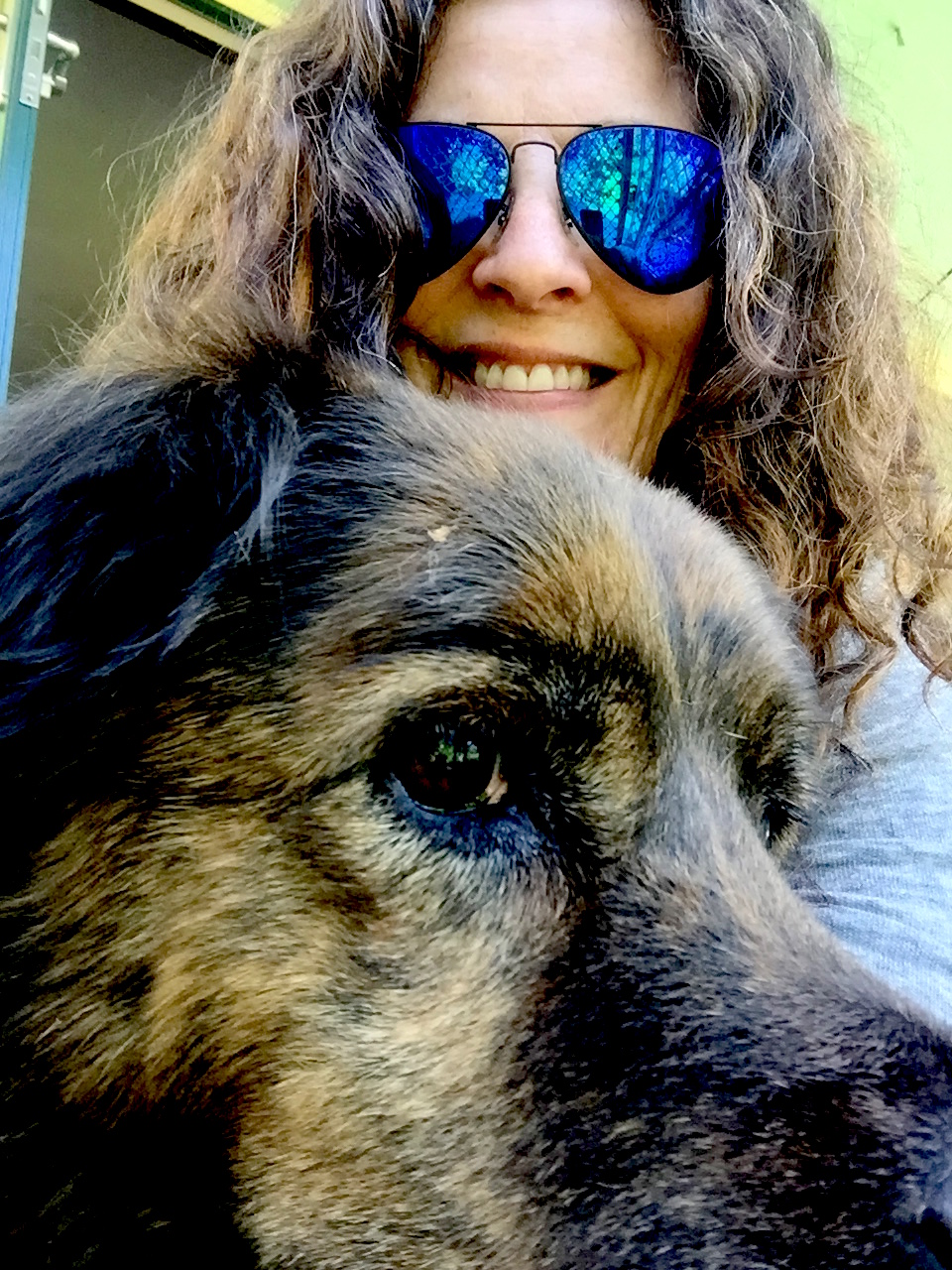 Midwestern Gothic staffer Sydney Cohen talked with author Michelle Herman about her novel Like A Song, using writing as a vehicle for the spoken word, exploring a relationship in fiction and more.
Midwestern Gothic staffer Sydney Cohen talked with author Michelle Herman about her novel Like A Song, using writing as a vehicle for the spoken word, exploring a relationship in fiction and more.
**
Sydney Cohen: What’s your connection to the Midwest?
Michelle Herman: I’ve lived in the Midwest in 1984: first in Iowa City, for graduate school — after which I fully expected to return to New York (I’d sublet my sublet! I was only going to be gone for two years!) — and then in Omaha, NE for two years; in 1988, I was offered a teaching job at Ohio State and I finally realized I wasn’t going home. I moved to Columbus and have been there since.
SC: Your book of essays, Like a Song, explored your relationship with your daughter Grace from her childhood to young adulthood. What was your process when writing the book – did you write as you experienced things in the moment, or write in reflection of those events?
MH: First in the moment, then in reflection. It’s actually the process of going back to what I’ve written “in the moment” that’s most interesting to me. And in the case of the first essay in that book, “Performance,” the first draft was written in 2005 — and even by the third of fourth draft everything I was writing about was changing (this is the joy and peril of writing personal nonfiction). I published a version of that essay in 2005, in American Scholar, and it was only much later, when I decided it had to be a part of this book, that I returned to it with the perspective of some years removed… and then again, once more, during final revisions of the book, in 2014. Every time I returned, I felt another layer had been added. And the last, long essay in the book, “Where You Start,” was written, first, during a difficult summer (that I ended up writing into the essay, later): I wrote a version of it during the summer of 2011 and then rewrote and rewrote it for the next few years.
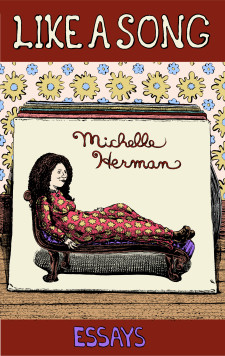
SC: Your last essay in Like a Song discusses your love of talking, and how that love is translated to the page. As an author, how do you use writing as a vehicle for the spoken word? In what ways are your thoughts and words different, or the same, in writing versus conversation?
MH: That’s an interesting question, because the rhythm of (my) natural speech is important to me when I’m writing narrative nonfiction — I want to write the way I talk (which is not something I think about when I write fiction). It’s highly crafted “natural” speech, of course (if only I could revise what I say in life, and make sure I’ve always chosen exactly the right word!). But one of the great joys of this genre for me is ability I have within it to “be myself” on the page — just as expansive and exhaustive and digressive (etc.) as I am in life, just as interested in telling you not only what happened but what I thought and felt about it when it happened and what I think/feel about it now, and what the space between those means (and then this other thing that made me just think about, and what that means, too). And it pleases me very much when people who know me — even people who’ve known me only briefly, passingly — tell me that these essays “sound” like me, that they can hear me speaking the words as they read them.
Can you describe the process of writing about a passion for singing, and how you navigated between the two different forms of communication to reach a meaningful expression of your feelings?
MH: Well, here’s a question I don’t know how to answer! Unlike talking/writing, singing/writing seem to me to work on two different channels altogether. The communication of singing is more like the communication of kissing than it is like writing — in other words, it’s far less about language than emotion (for me, anyway). Because I’m interpreting lyrics, not writing them — and because so much of the interpretation stems from the music and not the lyrics (or the two are inextricable!) — singing feels like something far removed from writing. Thus, writing about my love of singing was like writing about my love of anything or anyone else — my daughter, my hometown, my father, my grandmother, certain books — whatever it is that I am writing about tenderly and/or longingly or with simple affection. I never thought for one moment about “navigating” between the two. Sometimes I was singing, sometimes I was writing, sometimes I was writing about singing (which made me want to take a break from writing and do some singing), but it was never confusing to me — it never seemed to require navigating beyond the daily navigating of writing about anything.
SC: As an accomplished author, you have in your repertoire numerous novels and essay collections. What’s important to keep in mind when writing fiction versus nonfiction? What excites you about each genre?
MH: I’ve already mentioned something of what I love about writing nonfiction, what was a joyous discovery for me when I began to write it (after many years as a fiction writer). But I am always so happy and relieved to return to fiction! There is nothing quite like building a human being of your very own from scratch — figuring him out, learning as you go, seeing what happens when you put him into situations that he must instinctively react to. There’s nothing like exploring a relationship in fiction — taking two of your inventions and locking them in a room together to see what happens between them. And I love — I have always loved (which is why for years I didn’t understand why anyone would write nonfiction about their own life) — taking bits of my own life, my self, others I’ve known or observed, situations from life, little moment and big ones, and exploring them to see what I might make of them. I like the putting-it-together of fiction, and the growing from a small thing — an image, a phrase that has somehow stuck with me, an idea of what something might have meant. Really, from anything – and I love taking disparate “real” things and seeing how they grind against each other, how a story starts to emerge from that.
I would say I love the “freedom” of it, but I never feel terribly free, writing fiction. I always feel as if the house is on fire and I’m just running around trying to save things before they burn.
The answer to the question about “what to keep in mind” is: when writing nonfiction, tell the truth; when writing fiction, just make sure it seems true (which often, I’ve found, requires more research).
SC: While a native New Yorker, you have lived and taught for many years in Ohio. How has the Midwest influenced your writing? Would you say there are any components of your work that are distinctly regional?
MH: Well, I have been setting stories in the Midwest for a long time now — I can’t seem not to. Ever since my second book, I’ve used a Midwestern setting. It’s uncanny, really. I never intended this. Often (but not always) my characters are transplanted New Yorkers.
When I do set stories in New York – or when I write about my own life in New York – I have a perspective (a useful distance) I certainly never would have been able to attain had I not left. I think I’m writing about New York very differently than I would have otherwise.
I would say, though, that my stories are much less about place than they are about character, that place takes a back seat to person (which is how I live, too; I’m not much interested in travel, for example — I mean, I like it fine, but I don’t yearn for it the way so many people I know do). I think I use a very light touch when it comes to setting — but I also think that my fiction probably seems to be distinctly of New York, even when it’s set in the Midwest. I think it’s probably a sensibility coming through (you can take the girl out of Brooklyn, but…) as well as a cadence and, for lack of a better word, a spirit. But maybe I’m kidding myself.
SC: What’s next for you?
MH: A novel set in both New York City and a fictional Midwestern city. It concerns the lives of five characters, together and apart, and covers a good bit of time, as they try to understand each other and do a better job of loving each other, and make peace with loss (as must we all). (It’s also full of magic, as one of the five protagonists is a young magician.)
**
Michelle Herman was born and raised in Brooklyn and attended New York City public schools and Brooklyn College, after which she spent eight years eking out a living (mostly as a freelance copyeditor, but with stints at wire service reporting and other short-lived, ill-fated jobs) in Manhattan. When she left New York for graduate school in Iowa in 1984, she had no idea that she was leaving New York for good (or at least for the next 30+ years). Her eighth book, a novel, Devotion, came out just this past spring; her 2005 novel Dog was reprinted this year too. Like A Song, her third collection of personal essays, came out in 2015.
December 15th, 2016 |
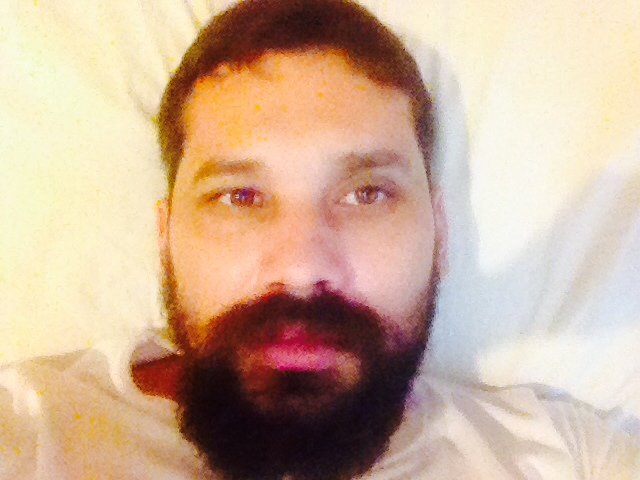 Midwestern Gothic staffer Megan Valley talked with poet Steve Castro about Latin@ Rising, trends in poetry, circular poems and more.
Midwestern Gothic staffer Megan Valley talked with poet Steve Castro about Latin@ Rising, trends in poetry, circular poems and more.
**
Megan Valley: What’s your connection to the Midwest?
Steve Castro: I came to the U.S. from Costa Rica when I was eleven years old. I spoke no English when I first arrived in this country. The Midwest is where I learned to read, write and speak the English language. I speak English with a Midwestern news reporter accent. It is where most of my formative years were spent.
From the time I came to this country in the fifth grade, to my senior year of high school, I lived mostly in the Southern Indiana region. Mostly in Evansville, but also in the nearby Indiana towns of Newburgh and Boonville and right across the border in Henderson, Kentucky. I also hold a couple of undergraduate degrees from Indiana University-Bloomington, so the Midwest is a big part of who I am.
MV: How has working with journals and magazines — poetry editor of FOLIO, assistant poetry editor of decomP, and co-editor of Public Pool — influenced your writing?
SC: I have read many different styles of poetry from poets from all over the world, and I’ve been introduced to many wonderful voices of poetry that I would not have otherwise known had I not been a poetry editor. I think that sort of diversity has helped me creatively as a poet.
MV: In your editing experience, what sort of trends have you noticed across multiple publications?
SC: As to trends regarding actual content, I see many love poems about a significant other, confessional poetry, poetry lamenting the loss of a loved one. I do not think there is anything wrong with this, but many poems I read deal with those topics. I have also come to realize that our poetry community is small. I recognize numerous poets who have submitted to all three of the publications that I’m a part of. I also receive poetry from young poets and poets who have never published before, and some of those poems are excellent and do get published.
MV: Your work will be featured in Latin@ Rising: An Anthology of U.S. Latin@ Speculative Fiction alongside authors like Junot Díaz, Ana Castillo and Carl Marcum; what are you trying to add to the current Latino/a literary scene?
SC: I’m just trying to write what comes from my heart. That is all. I love to write about the surreal, the strange, the speculative, the magical. My poetry manuscript, Blue Whale Phenomena is tailored that way. Every individual who has ever lived, has had unique fingerprints, and the same applies to my creative mind.
MV: Latin@ Rising features science fiction and fantasy, two genres that are often very white-centric or whitewashed. How does this collection address and challenge those norms?
SC: Matthew David Goodwin, the Latin@ Rising editor, answers this question beautifully in his foreword to this anthology when he writes, “What we hope to do in this anthology is to counter the separateness of Latin@ science fiction and fantasy by presenting a thrilling multiplicity of writers and stories, and by demonstrating that these writers have been part of the genres all along.”
MV: Which publication are you most proud of?
SC: I am a contributor to three highly anticipated U.S. based anthologies/special issues featuring Latinx poets, writers and artists coming out right now. One is the aforementioned Latin@ Rising anthology (Wings Press, Jan., 2017) and the others are the Green Mountains Review Special Issue dedicated to U.S. Poet Laureate Juan Felipe Herrera, guest edited by Allison Hedge Coke (Winter, 2016) and The Wandering Song: Central American Writing in the United States (Tia Chucha Press, Feb. 2017) edited by Héctor Tobar, Rúben Martínez and Leticia Hernández-Linares.
I also found it interesting that I’m the only Latinx poet, writer or artist that appears in both the Latin@ Rising anthology and the Green Mountains Review special issue. I haven’t looked at the table of contents for The Wandering Song anthology yet, but it would be surreal if I’m the only contributor that’s featured in all three anthologies/special issues. If that happened, then that would be amazing. It would be similar to what American Pharoah did in 2015, i.e., winning the Triple Crown.
MV: You were the poetry editor of FOLIO while earning your MFA from American University. What was the most critical thing you learned during that period of your life?
SC: Inclusion. During my first year as FOLIO’s poetry editor, I felt shackled. During my second year as poetry editor when Priyanka Joseph and Joellyn Powers took over as Managing Editor and Editor-In-Chief, respectively, they told me that they believed in my vision and gave me full creative control of our poetry content. The same thing happened during my third year when Stephannie Sandoval and Kangsen Wakai took over as Managing Editor and Editor-In-Chief; they both also believed in my vision as the poetry editor. I therefore gave an equal voice to my two poetry readers during my second and third years at FOLIO. I didn’t have poetry readers during my first year at FOLIO.
MV: How can publishing help people understand the issues people of color face?
SC: My fellow Latin@ Rising contributor, Daniel José Older, in his BuzzFeed article “Diversity is not enough: Race, Power, Publishing” talks about the apartheid of literature in which “characters of color are limited to the townships of occasional historical books that concern themselves with the legacies of civil rights and slavery but are never given a pass to traverse the lands of adventure, curiosity, imagination or personal growth.” I believe publishing can help people understand the issues people of color face by unshackling the writer’s creativity and allowing them to express themselves in any way they see fit. This way, people will see the complex issues that people of color face, expressed in creative and diverse ways.
MV: How do you know when a poem is done?
SC: I have multiple methods in how I end poems. I will provide one example.
I tie my endings to the opening lines of my poems or my titles. In my poem “Amnesia,” which was published in decomP before I became the assistant poetry editor, my final stanza is as follows, “A precious metal is that fragment of shrapnel / that missed you by inches; the deadly explosion / that made you forget alchemy.” That’s how my poem ends. When you look at the title, “Amnesia,” it makes you rethink the poem and start it all over again. The ending is connected to the title. The poem is circular.
MV: What’s next for you?
SC: God willing, the publication of my first poetry manuscript.
Not long ago, I finished revising my manuscript, “Blue whale phenomena.” I recently got an encouraging personal note from Ron Wallace, the series editor to the Wisconsin Poetry Series’ Brittingham and Felix Pollak Prizes at the University of Wisconsin Press. “Steve, Sorry! It’s a very strong ms., and was read with pleasure here. I wish I had better news. RW.”
P.S. – I’ve been editing “Blue whale phenomena” a bit since the uplifting note I received from RW. I’ve replaced a couple of poems with two others that I feel make it a stronger manuscript. I’ll continue to edit/revise my manuscript until it gets published, lol. I have a mild case of Walt Whitman in that regard.
December 8th, 2016 |
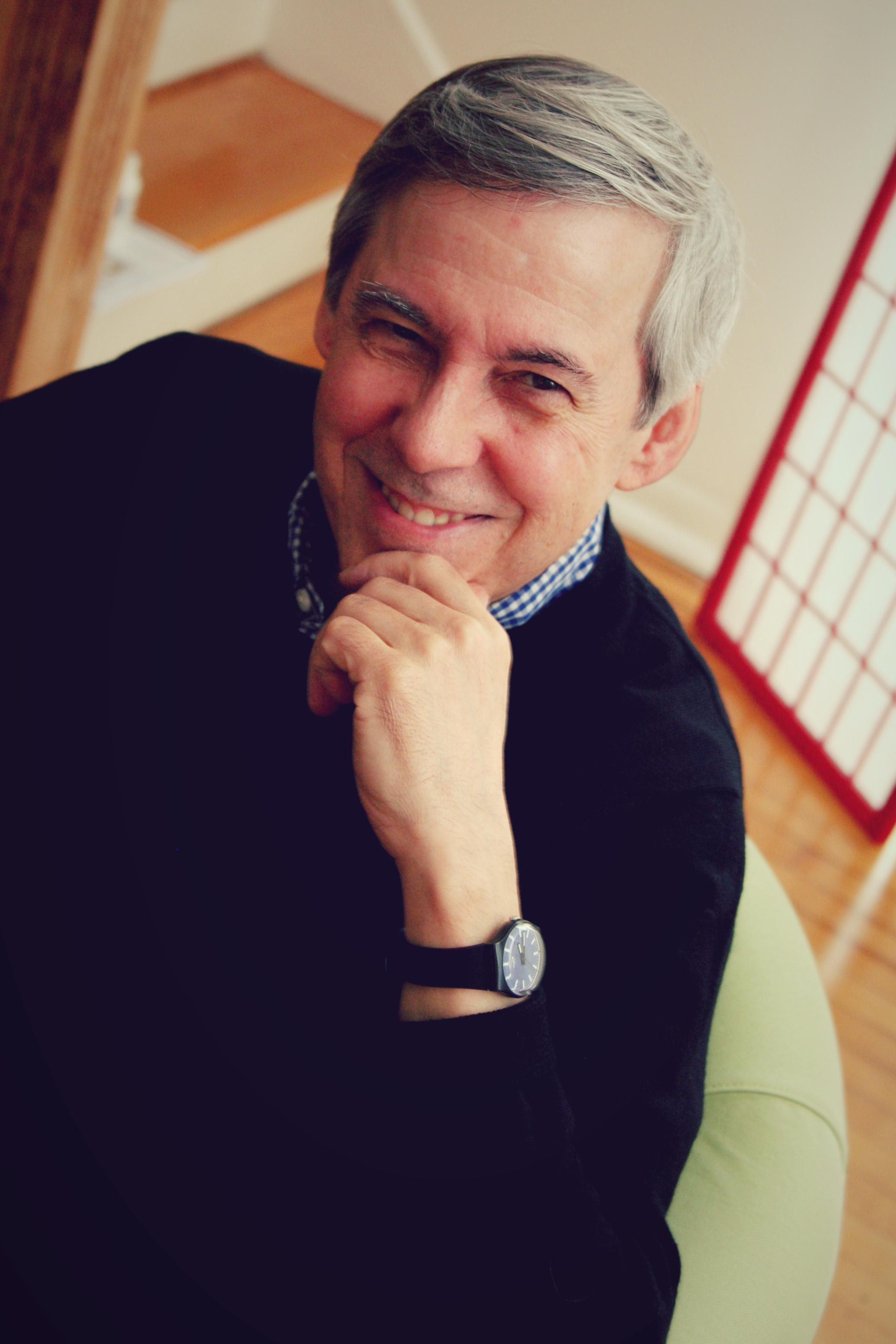 Midwestern Gothic staffer Lauren Stachew talked with author David Trinidad about his collection, Notes on a Past Life, unsettling emotions in poetry, letting poems be and more.
Midwestern Gothic staffer Lauren Stachew talked with author David Trinidad about his collection, Notes on a Past Life, unsettling emotions in poetry, letting poems be and more.
**
Lauren Stachew: What’s your connection to the Midwest?
David Trinidad: I live in Chicago. That’s about it!
LS: You grew up and attended college in California, then spent several years living in New York City. Now that you live in Chicago, how has your understanding of the Midwest changed in comparison to when you lived in the West and East Coasts?
DT: When I lived in Los Angeles and New York, I had very little knowledge of the Midwest. It was that vast (seemingly mindless) space I’d sometimes fly over, on the way to either coast, and that I always equated with that Talking Heads’ song: “I wouldn’t live there if you paid me.” Well, I do live here now, and they do pay me.
I love the personal space here. After fourteen years in New York, I really longed for a more civilized way of life. People don’t push you here, they’re not always trying to edge you out. In general, I find people quite friendly. There are flowers and trees and this beautiful sky. There’s this real sense of nature. In New York, I forgot that nature existed. That the sky existed! I just never looked up. And in Los Angeles . . . well, you’re always in your car there.
It’s strange: I live in Chicago, but I don’t feel like I live in Illinois. What does it mean to live in Illinois? I don’t know!
LS: Your most recent collection of poetry, Notes on a Past Life, details your time spent in the New York poetry scene. In a sense, these poems are like memoir-verses, but you describe this collection as more of an “experiment in memory.” How did you begin the process of telling this story? Do you feel that memory and poetry are inextricably linked?
DT: Notes on a Past Life began as an experiment — I tried to touch, lightly, on some opaque moments in the past. Remembering a color or an object and letting the poem take shape around that. Before long it grew into a book-length project, and took on a — I hate to say “heavy” — a more “serious” tone. It all became very urgent and intense, to remember the significant incidents and relationships from those years, and pin them down in poems. I think I do believe that memory and poetry are linked. At least they are for me. I seem to need to write poems to make sense of what I’ve experienced. It can take me a very long time — years, decades — to be able to address painful or traumatic experiences.
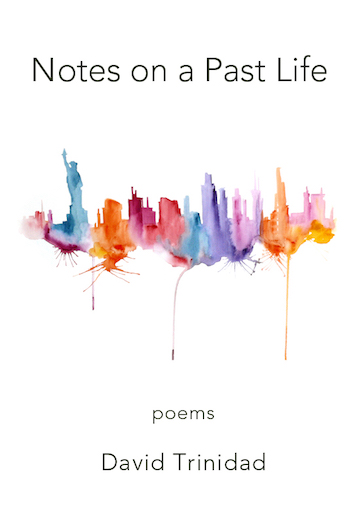
LS: You’ve said in a previous interview that “certain poems should trouble you.” What do you think is the value in poetry that may yield unsettling emotions? Do these kinds of poems reveal a different kind of truth that other poems cannot?
DT: I do think they can, yes. These kinds of poems help you see things clearly, or for the first time. They shed light on the dark corners. I know that sounds trite, but it’s true. Poems that can help you live, that you can live by. I imagine such poems are different for each of us, and are not what critics usually tout as “great.” It’s more of a private thing, between the poet and the reader.
I like poems that challenge or disturb me, that I have to come to terms with. Obviously I’m thinking of what a poem is saying, its content, rather than any so-called formal or aesthetic innovation. That’s all just surface dazzle. I get impatient with poems that are too evasive. As much as I love James Schuyler’s poems, he does this thing where he gets right to the verge of really saying something revealing but then turns away, goes in another direction. You can almost feel it coming, that turn, that evasion. I prefer poems that go in more directly for the kill, so to speak.
One poem that bothered me for a long time is Thom Gunn’s “Famous Friends.” It’s about an encounter with J.J. Mitchell in a gay bar in New York. Mitchell, who is dying of AIDS, is still cashing in on his one claim to fame: that he was Frank O’Hara’s last boyfriend. Gunn is brutally honest in his portrayal of Mitchell as a shallow character. I thought the poem was insensitive, even cruel. I argued with this poem — it really unsettled me — but finally made peace with it. I talked about it with my students and they helped me see it differently. Certain of Sylvia Plath’s poems trouble people, don’t they? I think people find her anger “unjust.” Richard Wilbur says as much in a poem, “Cottage Street, 1953.” That’s another poem I’ve argued with.
LS: Your first collection of poetry, Pavane, was published in 1981, and you’ve since published many other collections. How do you feel your writing style has evolved or changed with each collection?
DT: My writing has gone through a number of phases over the years, for sure. All along I’ve been in conversation with the poets I’ve admired (though I might not have always known it). I suppose I’ve been drawn to them because they do something that I want to learn to do myself. Touch the reader. Describe something beautifully. Open a window on the creative moment. Engender a sense of intimacy. My recent books seem to take shape much more organically than my earlier books. I try not to overthink what I’m doing. I just do it. My last book I wrote without even trying to write it. It just happened. That was a first. It showed me how fluid the process of writing has become.
LS: Do you ever revise your early poems, or prefer to leave them be once they are finished?
DT: I revised my early poems for the longest time. There seemed to be so many things wrong with them. I had to fix them! At some point I just surrendered. I had to accept that they were early poems, young poems. I had to let them be. It all moves much faster now. I rarely revise beyond a certain point. You work on a poem, it feels alive, you keep tinkering with the things that bug you. But then it’s done, finished. The door closes. The poem begins to feel inviolable.
LS: As a professor of Creative Writing and Poetry at Columbia College Chicago, what is a piece of advice you always give your students?
DT: Read as much as you can. Don’t put all your faith in contemporary poetry. The wind, to paraphrase Ted Hughes, will blow most of it away. Read dead poets. Read collected poems cover to cover. Focus on the writing, not the politics. Embrace variety.
LS: Which poets have had the biggest influence on your writing?
DT: Anne Sexton, Sylvia Plath, Ted Hughes, Ann Stanford, May Swenson, Frank O’Hara, James Schuyler, Alice Notley, Joe Brainard, Tim Dlugos, Amy Gerstler, William Carlos Williams, Elizabeth Bishop, Pablo Neruda, Emily Dickinson. Kind of, but not strictly, in that order.
LS: What’s next for you?
DT: I’m editing Ed Smith’s poems and notebooks. Ed was a wonderful poet, a friend from Los Angeles in the early ‘80s. His two poetry books are long out of print. He died in 2005. I’m also working on a prose memoir. And several other projects. Lately I don’t seem to be as single-minded as I have been in the past. There are a lot of projects in the works.
**
David Trinidad’s latest book is Notes on a Past Life (BlazeVOX [books], 2016). His other books include Dear Prudence: New and Selected Poems (2011) and Peyton Place: A Haiku Soap Opera (2013), both published by Turtle Point Press. He is also the editor of A Fast Life: The Collected Poems of Tim Dlugos (Nightboat Books, 2011). Trinidad lives in Chicago, where he is a Professor of Creative Writing/Poetry at Columbia College.
December 1st, 2016 |
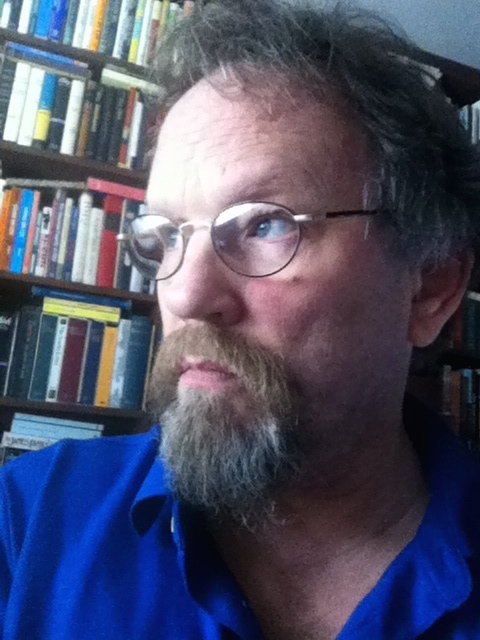 Midwestern Gothic staffer Megan Valley talked with author Gary Amdahl about The Daredevils, musing vs. building, radical labor activism and more.
Midwestern Gothic staffer Megan Valley talked with author Gary Amdahl about The Daredevils, musing vs. building, radical labor activism and more.
**
Want to get your hands on a copy of The Daredevils? We’re giving away three copies of the book — find any of our posts about the giveaway on Twitter and retweet to be entered to win. Only one book will be awarded per person, but feel free to RT as many times as you want to get multiple entries! Deadline is Sunday, 11/20 at midnight. US only please.
**
Megan Valley: What’s your connection to the Midwest?
Gary Amdahl: I was born in Jackson, Minnesota, on a farm with no running water, in 1956. My mother was born there in 1935, and carried water from well to house every day of her life until she left for college. Her father was born near there in 1890. His father was born near Mankato in 1857. Legend has it he saw the mass hanging of thirty-eight Dakota men in retaliation for the Sioux Uprising of 1862. They were from around Hallingdal, Norway. On my father’s side, my great-grandfather came from near Stavanger, Norway and settled in northeastern Iowa. I graduated from Robbinsdale High School in 1974 and took twelve years to get a B- English BA from the University of Minnesota, at which point I departed the Midwest for good (coming back only for my last play and to get married on Madeline Island in Lake Superior).
MV: You’ve written six books and nine plays; what’s the difference in writing those two types of literature?
GA: That’s a good question, and one I never get tired of thinking about. For starters, in a novel, I think, you can muse, whereas in a play you have to build. In a play, every line has to answer a question for the audience, and ask another one. There’s no time to lose. The audience has to be waiting for the next entrance, but the entrance, when it comes, has to be a surprise. I’m not talking about melodramatic contrivance — although a playwright can have a lot of fun, do a lot of good work with such silliness — I’m talking about actually constructing something with words and gestures that the audience can see taking shape before their eyes, something that holds together but which can’t be predicted. So it’s not quite carpentry and it’s not quite card tricks.
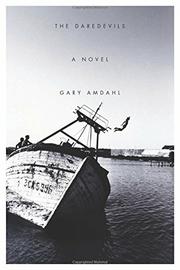
MV: The Daredevils centers on a man who obsesses between performance and “real” life — how does this relate to the political themes, including radical labor activism?
GA: Wow. Thank you for asking the only question that mattered to me in the end. (Writing The Daredevils took a very long time; please see http://www.necessaryfiction.com/blog/ResearchNotesTheDaredevils for the story of the story.) Hundreds of great books have been written on this subject, from Erving Goffman’s The Presentation of Self in Everyday Life to Galen Strawson’s Selves, and every major philosopher and sociologist deals with it one way or another; novelists have long played with the alternation of aspects of “the personalities of characters” as they change perforce or by calculation from situation to situation.
So I have this tremendous intellectual and artistic foundation, but I am mainly dealing with personal experience. I was outgoing as a kid, a budding decathlete, socially active and socio-politically adept — if a grade- and middle-schooler can be said to be such a thing, and I think he can — but became other-end-of-the-spectrum shy, and spent my twenties in alcoholic, suicidal despair. But because I was also in the theater, and hanging around with people who didn’t philosophize about acting, but instead simply acted, for better or worse, in sickness and in health, I somehow began to see that there was no self worth speaking of without action, and that if I thought too long about anything, I’d never ever act. My life would be the wholly interior life of the alcoholic. Mental health would become something I couldn’t take for granted. So I began to act in what seemed to me to be desperate, goofy, reckless ways. But to other people, apparently, I seemed to be coming to life.
Long story short: politics is a particularly desperate and goofy and reckless kind of action that affects everybody on the planet willy-nilly. It is also particularly visible, often brazenly and ridiculously so. The actions often seem cowardly or calculated, rather than genuine and brave, which was how I wanted to perceive my own “personal political actions.” The difference between what I came to think of as my personal radicalism and a larger more inclusive political radicalism was just a matter of venue and connection. The difference between radical politics and mainstream/center politics is the same as the difference between an actor and a member of the audience. “Radicalism” isn’t associated with “activism” for nothing (not that they are the same thing — they aren’t). There is a great deal of pressure on all of us to do nothing. And I am generally a proponent of that Pascalian proposition that evil flows from people who are not content to sit quietly in their rooms. But: we are simply not capable of sitting in our rooms quietly forever. I meditate, and I know some Big Meditators: we all agree that you can’t do it for very long, and if you press it, you get weird. There’s a difference between letting it be and not caring, between apathy and disinterest. We have to act because we have bodies. We’ve got great opportunities to go with the flow, to be passive spectators, both of light entertainment (TV, movies, etc.) and heavy entertainment (politics), but in the end, our physicality forces us to act.
Ideally, I can act simply and surely, with a cool head and clean hands so to speak, in a spirit of constant improvisation as the present happens and my brain lets me know that means to me — but only if I improvise. Calculation is forbidden, and much, much worse is expectation of success, expectation of anything, really. If you start depending on and calculating for and expecting success…you are doomed. Wickedness and misfortune can ensue just as naturally as riches and fame. You start to buy into…wait for it…the narrative, and the narrative starts to direct the action rather than the action directing the narrative. A subtle difference, perhaps, but a fundamentally important one. Cool improvisation will always be seen as radical in a passive environment devoted to maintenance of the status quo, even if the status quo isn’t particularly comfortable or desirable; but somewhat paradoxically, cool improvisatory radicalism is always the way to restore comfort to a tormented soul, family, city, country, world. (For example, I’m hard pressed to think of a more radical outfit than Alcoholics Anonymous.)
I say this as a human being whose illusory self is composed of nothing but competing narratives offered up by the people of his time and place — here’s how to succeed, here’s how to be happy, etc. — but also as a dramatist and a novelist. Stanislavsky’s major question was something like “Does the emotion elicit the act or does the act elicit the emotion?” The answer isn’t simple, but it was clear from the start that the actor had to get up on the stage and move before anything else could happen. I’m not a postmodernist (I think most artists reject categories like that, even “artist” when you get right down to it) but I do despise tired conventions, and I have a special dislike for the infantile melodramas that currently dominate our literary narratives. The two main characters in The Daredevils, Charles Minot and Vera Kolessina, are poised just on either side of the line that divides improvisation and narration. Vera, a poor mill girl, has quite a story of success already behind her, and is inclined to want her improvisations to continue to propel her forward toward greater success. And who could blame her? Charles is fantastically wealthy. We have seen countless upper-class twits disgusted by their inherited fortunes, and countless more devoted to them, but I don’t think we’ve seen many who are radically disinterested in them.
MV: Which writers have most influenced your style?
GA: Style, as opposed to inspiration, and including method: James, Proust, Faulkner, Halldór Laxness, Malcolm Lowry, Patrick White, Pynchon.
MV: In your novel, Charles Minot starts in San Francisco and relocates to the Midwest. What role does setting play in The Daredevils?
GA: I wanted the novel to open with that feeling that San Francisco still has, of vast wealth and land’s-end bohemianism, the Golden West and the corruption, opera and motorcycles, mild climate and wild desires — and then show how ephemeral or indeed illusory it all is. The move to Minnesota was inspired by my growing awareness that nice little Minneapolis was a seat of power every bit as corrupt and wealthy as San Francisco — and they had a Socialist mayor in the middle of it all! Minneapolis was Big Timber, Big Iron, Big Grain in the way that San Francisco is now Silicon Valley. And the state and the Twin Cities were run by men who would have loved to have a clown like Donald Trump as their public face.
MV: What do you wish you had known before you began writing?
GA: I wish I had known that it was more important, and healthier for both body and soul, to write what I could write, and not worry about what I couldn’t write.
MV: As someone’s who written many plays, how did that influence your writing of The Daredevils, which focuses on the themes of performance and theatricality?
GA: I answered this over-thoroughly above, so I’ll just add this: I wanted to say everything about the theater and acting in the novel that I couldn’t say or do in a play. Now of course I wonder how I might adapt the novel to the stage…
MV: What’s the best piece of advice you’ve ever gotten on writing?
GA: This is going to sound arrogant or weird, but…I’ve never gotten a piece of advice on writing. Unless it’s the bromide my near and dear ones have kept handy for decades: don’t let the assholes get you down.
MV: What’s next for you?
GA: The Daredevils sold very poorly, so I am looking for a new publisher. I have three books ready to go: a short novel told entirely in dialogue, Three Clowns, Or, Bellus Spectaculum Gazebo: A Transcript of a Midsummer Night’s Dialogue in Three Acts Concerning the Supreme Fiction; a collection of essays, stories, and poems; and a long novel, The Treaties. I am also looking for a theater to produce the first play I’ve written since 1989: Dharma Comes to Dinner.
**
Gary Amdahl‘s most recent works is a collection of stories, The Intimidator Still Lives In Our Hearts (Artistically Declined Press 2013); two novels, Across My Big Brass Bed (ADP 2014) and The Daredevils (Soft Skull 2016); an essay, Much Ado About Everything: Oration on the Dignity of the Novelist (Massachusetts Review Working Title, 2016), and a play, Dharma Comes to Dinner. He lives in a cracked and dusty test tube filled with fifteen million people that lies between Los Angeles and Palm Springs, with his wife, PEN award-winning writer Leslie Brody, and their dog and cat.
November 18th, 2016 |
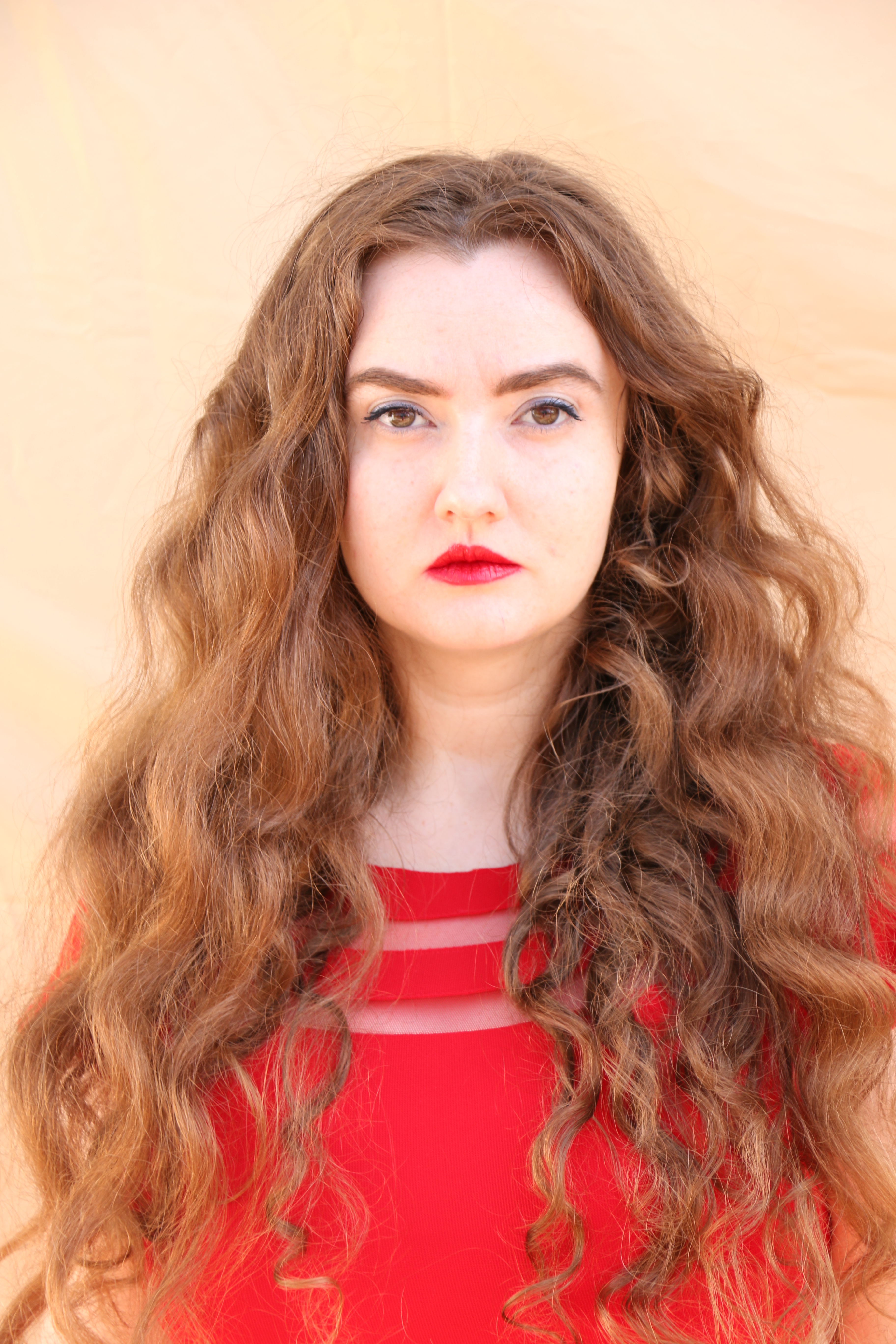 Midwestern Gothic staffer Lauren Stachew talks with author Tiffany McDaniel about her novel The Summer that Melted Everything, what’s in a name, midwestern gothic as a genre, and more.
Midwestern Gothic staffer Lauren Stachew talks with author Tiffany McDaniel about her novel The Summer that Melted Everything, what’s in a name, midwestern gothic as a genre, and more.
**
Lauren Stachew: What’s your connection to the Midwest?
Tiffany McDaniel: I was born and raised in Ohio. I think every author is shaped by the land they come from and the Midwest has certainly shaped my own writing, particularly the southern reaches of the state, which is where my parents were raised. I spent my childhood summers and school-year weekends on the hilly acreage my father was left by his parents. The Summer that Melted Everything takes place in the fictional town of Breathed, Ohio, which is a landscape reflective of my time spent in southern Ohio, where the nights are mythically starred while the hills sing you to sleep. I’ve always said cut me open and fireflies will fly out with blood of rust and some moon-shine magic. How can it not?
LS: Your debut novel, The Summer That Melted Everything, is set in the fictional town of Breathed, Ohio during the summer of 1984 – the year a heat wave scorched the entire town, and the year main character Fielding Bliss befriends the devil, who takes the form of 13-year old boy, Sal. The short synopsis in itself is both compelling and wonderfully unusual. When and how did you formulate the idea for this novel?
TM: The novel started first as a title. It was one of those Ohio summers that was so hot I felt like I was melting. All of me dripping down onto the dandelion ground. I always start a new novel with two things. The title and the first line. These two things determine the course of the story. I never outline or plan the story out beforehand, so the idea evolves with each new page and word that I write. Outlining or planning the story domesticates the idea and I want to preserve the story’s wild soul so it can beat on with the thunder.
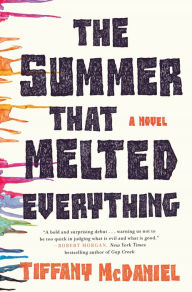
LS: The characters in this novel have such beautifully strange names – Fielding Bliss and his father Autopsy, in particular. Why did you prefer these names as opposed to something more conventional?
TM: I’ve found in my writing that I tend to stray from those conventional names like John or Mary. There’s so much in a name, and using a name as a subtle tool to drive a theme home is something I take advantage of as an author. I feel like the characters already know their names and it’s up to me as the author to name them their truth. In the case of Autopsy, I had seen the word that day I was naming him. We’re all familiar with the word autopsy from crime shows and movies. The dead body on the cold slab. But when I looked up the definition of the word and saw it’s meaning of ‘to see for oneself’ there really was no other name for a man who one day puts an invitation in the newspaper inviting the devil to town.
LS: The language and atmosphere of this novel feel almost cinematic at times. Because you are also a screenwriter, were there any films that provided inspiration or imagery into this narrative?
TM: I do love film and when I write I tend to write with the hope that the story will be translated to the screen. For the most part I’ve always been pretty visual. It’s almost like a movie filming in my head. I can’t say there were any films that provided inspiration for the story. You’ve got to allow your story to be its own self and not the echo of something else.
LS: This novel has been described as “Southern Gothic” by several reviewers, yet both the novel’s setting and your upbringing are in Ohio. Why do you think the qualities of southern fiction have been ascribed to this narrative, as opposed to recognizing its Midwestern environment and perspective? Do you think southern Ohio, and perhaps other parts of the Midwest, exist in a liminal space between these regions, having the ability to hold their identities in both places at once?
TM: I think people who are unfamiliar with southern Ohio will think after reading The Summer that Melted Everything that the story is more southern, just because when we hear that dialect or twang we immediately associate it with the southern portion of the United States, which is a shame because there’s so much culture in the southern reaches of Ohio that most, even those living in the central and northern part of the state, aren’t too aware of. Things like making moonshine and swimming in the creek is something we’ve seen over and over again in southern books, shows, and movies so that particular lifestyle is strongly associated with the south and the south only. Furthermore, I think Midwest Gothic isn’t as ingrained in readers’ minds as Southern Gothic because Southern Gothic is a genre that has been long-established by some of the finest authors we’ve ever had like Harper Lee, Flannery O’ Connor, Carson McCullers, Shirley Jackson, and William Faulkner. Because they are authors who are so prominent, that southern genre has swallowed other gothic genres, Midwest included. It’s unfortunate because there’s so much magic in this land and in its literature. There is its special brand of gothic that rises to its own occasion.
LS: What does a typical day of writing look like for you?
TM: I don’t have a schedule or routine. I don’t set a goal of writing a certain amount of words or pages a day. For me, it’s just about being present and ready. It’s like going out to a big ol’ faucet. Turn that faucet on and just be ready with a big ol’ bowl to catch what comes out.
LS: Which author(s) have had the most influence on your writing?
TM: I’ve been writing since I was a kid. I grew up on R.L. Stine. His Goosebumps and Fear Street series. I didn’t read the heavyweights of my literary genre until I was older and had actually already had my first novel written, so I can’t say there’s been a particular author or book that has influenced me, but some of my favorite authors are Ray Bradbury, Shirley Jackson, Harper Lee, Donna Tartt, and the poet James Wright.
LS: What’s next for you?
TM: I have eight completed novels and am working on my ninth. The novel I’m hoping to follow The Summer that Melted Everything up with is titled, When Lions Stood as Men. It’s the story of a Jewish brother and sister who escape Nazi Germany, cross the Atlantic Ocean, and end up in Ohio. Struggling with the guilt of surviving the Holocaust, they create their own camp of judgment up in the hills of Breathed, Ohio. Being both the guards and the prisoners, the siblings punish themselves not only for surviving, but for the sins they know they cannot help but commit.
**
An Ohio native, Tiffany McDaniel’s writing is inspired by the rolling hills and buckeye woods of the land she knows. She is also a poet, playwright, screenwriter, and artist. She is the winner of the Not-the-Booker Prize for her debut novel, The Summer that Melted Everything, which is a Goodreads Choice Award 2016 nominee.
November 17th, 2016 |
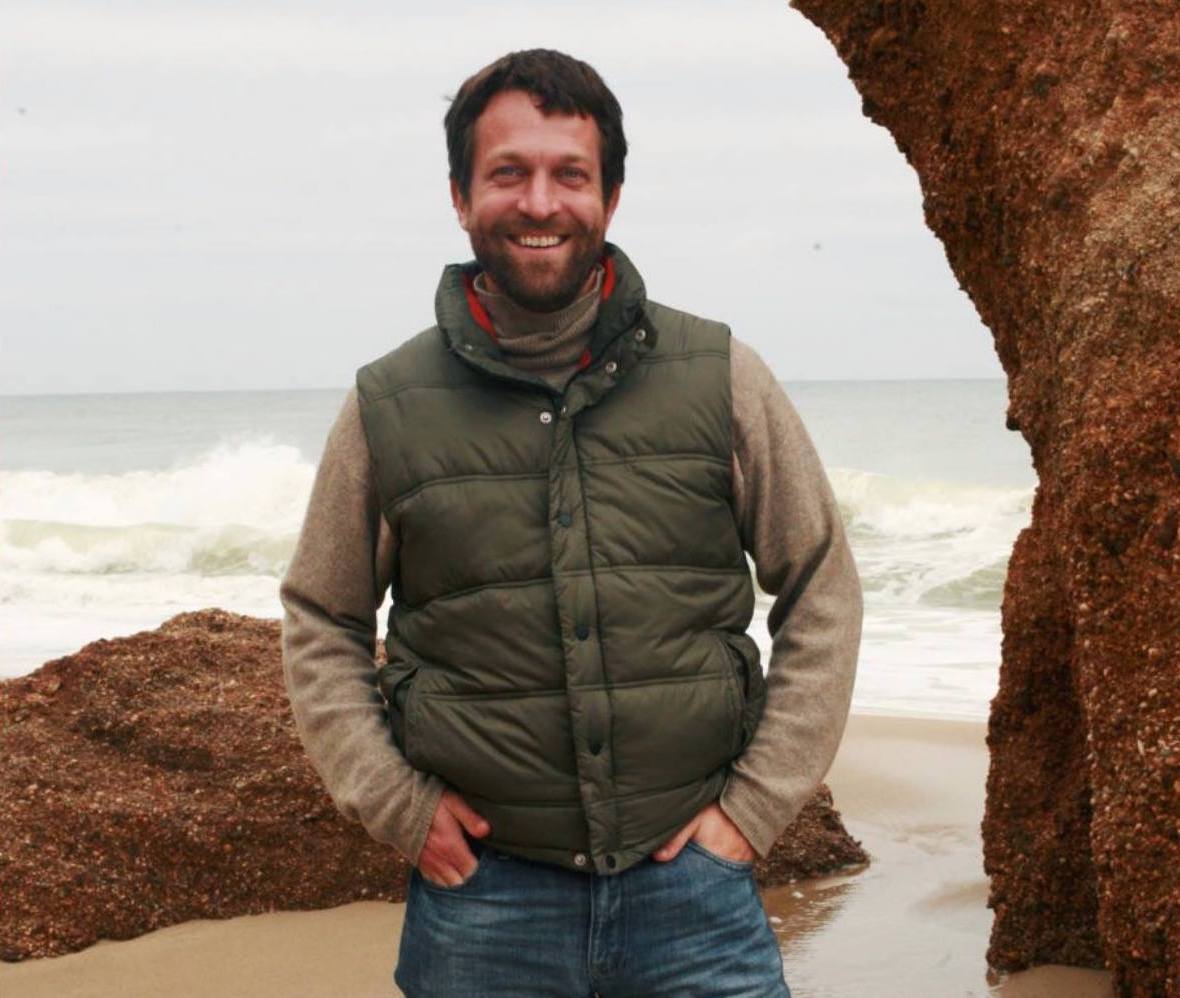 Midwestern Gothic staffer Kristina Perkins talked with author Alexander Weinstein about his collection Children of the New World, the relationship between technological and interpersonal connection, finding hope in dystopia and more.
Midwestern Gothic staffer Kristina Perkins talked with author Alexander Weinstein about his collection Children of the New World, the relationship between technological and interpersonal connection, finding hope in dystopia and more.
**
Kristina Perkins: What’s your connection to the Midwest?
Alexander Weinstein: I’m originally from New York, and came to the Midwest by way of Portland, Oregon (where I was a chef for many years) and Boulder, Colorado (where I finished my undergraduate degree at Naropa University). I first came to the Midwest when I entered Indiana University’s MFA program in Bloomington, and then six years ago I moved to Ann Arbor for my teaching position.
KP: How has the Midwest — as a place, a community, and/or a value system — influenced your writing?
AW: It’s been an interesting mix of compassion, joy, and despair! The final story in the collection, “Ice Age”, came about from the first winter I spent in Michigan. We were covered in perpetual snow and ice, and I felt like I was living through an ice age! There’s also a great deal of urban decay and economically devastated communities throughout Michigan, which has led to the socio-economic and environmental settings which appear in the collection. There have been travesties of justice throughout Michigan. Our governor, Rick Snyder, knowingly switched the city’s water source and so poisoned the families of Flint. So this kind of political crime is far beyond any dystopia I could dream up in my fiction. Detroit, which is nearby, contains post-apocalyptic landscapes while also birthing urban-farming and re-inhabited art and community spaces—and this speaks to a kind of dystopic hopefulness that underlies the collection.
So that’s the element of despair that I’ve felt in the Midwest. As for compassion and joy, I’ve been raising my son here in the Midwest, and our relationship brings a great amount of joy to my life. This element of parenthood plays a big part in the collection. I also think there’s a real genuineness and kindness underlying Midwestern sensibilities. In many ways, there’s a lack of pretentiousness in the Midwest (in particular, the uber-hipsterism which one can find in many coastal cities) and I admire this Midwestern honesty. I remember one winter, when my car went off the road during a snowstorm, there were literally dozens of people who stopped to help me and my family. Perhaps this level of human kindness is present throughout the US, but I’ve noticed it in particular since moving to the Midwest.
KP: Your debut collection, Children of the New World, focuses on the (often times inverse) relationship between technological and interpersonal connection. How would you describe your own relationship to technology — not as only a writer, but as a teacher, father, and community member?
AW: There are a great number of social/political ways that the internet helps us — we learn about social injustices around the world thanks to the internet, and we’re able to protest and create human rights movements due to the networking capabilities technology provides. All of which I use the internet for. One can also download great spiritual talks from thinkers like Ram Das, Rabbi Zalman, Terrance McKenna, or the Dalai Lama. In this way, there’s a wonderful availability of spiritual teachings thanks to technology — and I often listen to these podcasts and find them very enriching.
Of course, the internet isn’t good or bad, it all depends on how we use it. But my fear is that we’re not really using it that well. The endless emailing and texting, the spambot click-bait, and the millions of mini-games out there — it all creates an intense addiction to our devices. I find myself checking my phone 30-40 times a day, at red lights I send off a last text to someone—these are behaviors symptomatic of addiction. So, while I certainly use/need technology on a daily basis, I’ve been making an effort to disconnect. I leave the phone at home now, am considering reinstalling a landline, and try to avoid screen time as much as possible. I’ve even started calling people instead of texting them (what a bizarre idea-right!) And I’ve been working with my son to help him not overuse technology, since I think these issues of addiction are all the more severe for the generations raised with devices.
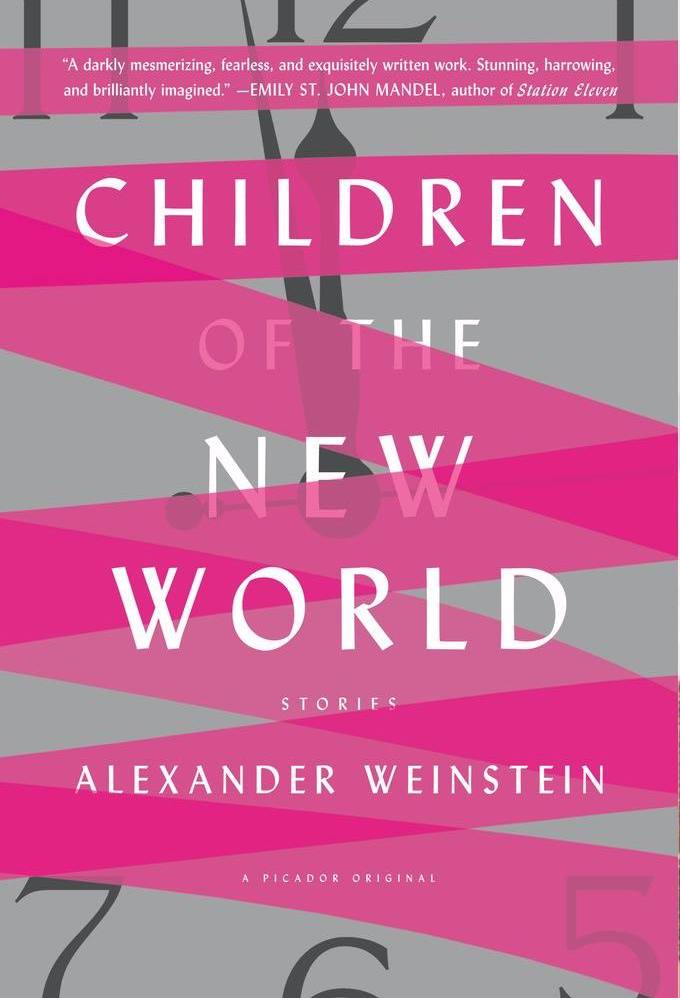
KP: You’ve said in previous interviews that, despite their themes of dystopia, anxiety, and fear, your stories are ultimately hopeful. When crafting your stories, how much are your plots influenced by this sense of optimism?
AW: I put a good deal of importance on hopefulness and human kindness within my writing. I really do want my stories to inspire positive change in the world — whether it’s due to a sense of optimism, empathy, a desire for human love and connection, or for activism. For this reason, it’s particularly hard when I have a darker story come to me.
For example, the story “Heartland” is one of the most devastating stories in the collection. The parents in that story are struggling so deeply, and the decisions they are forced to confront are awful ones that I’d never want anyone to have to make. While writing that story, I really struggled against my own sense of optimism. The story doesn’t match up with my hope for the world, and originally I tried to make the story a humorous one to lighten the mood (if you know the story: a clearly asinine endeavor). This attempt — to superimpose my own philosophical desires on the story — made the story unwriteable for two years. I finally had to get myself out of the way and allow the story to be told in the tone it demanded.
KP: Why do you think science fiction writing places so much emphasis on the dystopian, the post-apocalyptic? Should we make more room for utopian literature? Put another way: what is the relationship between dystopia and utopia, both in Children of the New World specifically and sci-fi generally?
AW: Well, we’re certainly living though rough times. Fracking is making our water flammable, police are killing innocent black people with seeming impunity, there’s a legal system increasingly set up to protect corporations, and in North Dakota, the tribes of all nations have been amassing to protest the seizing of their lands by oil companies and are facing brutality from the National Guard. These are huge social, environmental, and human rights issues (just to name a few). When I look at these issues, I see a world much more dystopic than anything I could come up with. So I think sci-fi writers are often looking critically at the world, and dystopian stories offer social critique and literary activism. Certainly the stories in Children of the New World are working in this vein.
And yet, I’m totally fascinated by this idea of a new utopian literature. In many ways, I feel like our art forms (particularly in the past 40 years) have been largely informed by a kind of ironic/cynical stance. Intellectual acuity has gone hand in hand with a kind of jaded, ironic cynicism. There are many writers who I admire that revel in this cynicism — David Foster Wallace is a prime example. There are of course exceptions to this rule (Italo Calvino and Tom Robbins) but largely we’ve been in the business of cynicism for the past couple decades. This makes me think that there may be an unexplored genre out there: one which utilizes the emotion of unabashed joy as its central motivation. I’ve been thinking a lot about the jubilant story. What does a story look like that takes the tone of a praise poem? A story which sings? This sort of story would somehow have to celebrate the mystery of being alive, of human kindness, of love, compassion, and care. I think the poets are already exploring this terrain much more readily than fiction writers. I really love Ross Gay’s collection, Catalog of Unabashed Gratitude — which has an incredible amount of love and praise for humanity. The question a more utopian literature raises is how one deals with conflict? Perhaps, the very notion that fiction needs conflict is merely a remnant of the older models of narrative (which are intrinsically linked to cynicism). Are there other craft techniques that would supplant the element of conflict in a more utopian literature? I don’t know the answers to these questions, but the idea of the joyous story is always simmering in the back of my mind.
KP: The landscapes of Children of the New World are decidedly futuristic: your characters live in societies where clones, robots, and even virtual sex games are commonplace. Despite this technological futurism, you’ve mentioned that you consider your work more as speculative fiction than traditional sci-fi. Why do you make this distinction? What, to you, are the benefits of this sort of genre hybridity?
AW: Since I don’t get into the actual science behind the technology, my stories don’t fall into the technical category of sci-fi. Scientific believability is often a badge of honor for sci-fi writers — deservedly so — and because of this, I feel that my work is speculative rather than scientific. My focus on the very human dramas of life (the struggle to love well, to be good parents, to navigate relationships) also shares a great deal with the genre of literary realism. So the genre labels of speculative fiction and slipstream work well for covering both of these terrains. All that said, I’m not a huge fan of siphoning literature into genres — I’m much more for letting all genres (sci-fi, detective, mystery, adventure, humor, absurdity, realism) come under the heading of simply “Fiction.”
KP: I was wondering if you could talk a little more about your creative writing program at Martha’s Vineyard. Why did you start it? What drew you to an island off the coast of Massachusetts?
AW: When I first became a writer, I imagined I’d be entering into an actively artistic community, full of late night dinners, philosophical conversations, impromptu poetry readings, etc. And there have been times of such artistic collaboration in my life and also throughout history (the Expatriates in Paris, The Beat Generation, etc.) But I was surprised to find that the writing life was much more solitary than I’d expected, often fraught with faceless rejections, and unfortunately besieged by internal hierarchies and competition. This idea of a hierarchy (and it appears in writing programs where only “the best” student writers get to work with “the most prominent” faculty) was completely antithetical to what I considered an artistic community.
So in 2010 I founded The Martha’s Vineyard Institute of Creative Writing in order to create a summer writing program where writers of all ages and experience levels could work together in a supportive and craft-intensive environment. The founding goals were to minimize competition and nurture cooperation, craft, and community. MVICW is also specifically focused on breaking down the hierarchies and literary egos which can arise in more competitive programs, and promoting a model of inclusivity. Attendees work closely with the visiting faculty, there are evening readings, craft seminars, and faculty and attendees celebrate with a dinner together — so it creates a much more intimate and creative environment (the kind I’d hoped for when I first became a writer).
Every year I’ve been inviting award-winning authors, poets, and literary journal editors to come to MVICW as faculty. Since we are a non-profit organization, our mission is to help writers in financial need, and I’m engaged in fundraising and grant writing to create fellowships for writers who would benefit from the program but couldn’t otherwise afford to come. Over the past seven years we’ve been able to offer dozens of scholarships to writers, and my hope is to eventually have a fully endowed program.
As for Martha’s Vineyard, my family has our home on the island, and so it’s been my home for a long time. The island has a really rich history of supporting literature and the arts, and it’s also one of the most beautiful places I know. So I wanted to share this place, which means so much to me, with other writers.
KP: Who is your favorite contemporary author, and what type of inspiration do you draw from their work?
AW: Can I name more than one? If so: Tom Robbins, Ishmael Reed, Tatyana Tolstaya, George Saunders, Karen Russell, Ludmilla Petrushevskaya, Michael Martone, Steven Millhauser, Victor Pelevin…I could go on. I love how each of these writers experiments with the borders of fiction and the so-called “rules” of literature.
KP: What’s one thing you wish you had known when you first began writing?
AW: The number of rejections inherent in finding success! We’re talking hundreds upon hundreds of rejections — which is par for the course.
KP: What’s next for you?
AW: I’m presently working on my second book with Picador, The Lost Traveler’s Tour Guide, a novel comprised of tour guide entries that describe fantastical cities, museums, libraries, restaurants, hotels, and art galleries — each one a universe unto itself. It works primarily in the vein of Italo Calvino’s Invisible Cities, and Milorad Pavic’s Dictionary of the Khazars. It’s also a kind of autobiography, as each of the destinations is a metaphor for the emotional locations I’ve visited: museums of longing, hotels of joy, cities of heartbreak. Whereas Children of the New World has ties to sci-fi, this new book is rooted in magical realism. All the same, I’m still working with my favorite topics: nostalgia, longing, memory, and love.
**
Alexander Weinstein is the Director of The Martha’s Vineyard Institute of Creative Writing and the author of the short story collection Children of the New World (Picador 2016). His fiction and translations have appeared in Cream City Review, Hayden’s Ferry Review, Pleiades, PRISM International, World Literature Today, and other journals. He is the recipient of a Sustainable Arts Foundation Award, and his fiction has been awarded the Lamar York, Gail Crump, Hamlin Garland, and New Millennium Prize. He is an Associate Professor of Creative Writing and a freelance editor, and leads fiction workshops in the United States and Europe.
November 11th, 2016 |
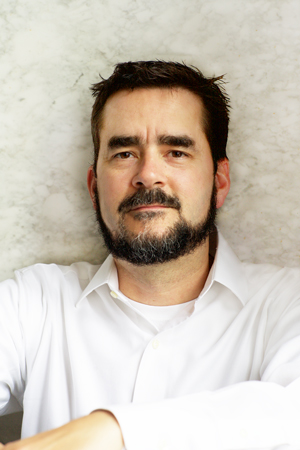 Midwestern Gothic staffer Sydney Cohen talked with author Daniel Raeburn about his book Vessels, looking for a home, birth and death and more.
Midwestern Gothic staffer Sydney Cohen talked with author Daniel Raeburn about his book Vessels, looking for a home, birth and death and more.
**
Sydney Cohen: What’s your connection to the Midwest?
Daniel Raeburn: I lived in Iowa City for most of elementary school and college. After college I moved to Chicago, where I’ve been for the past 23 years. I think my deepest connection has to be the sound of insects at night. Crickets, cicadas, who knows what whirring and whining so loudly that the summer nights sound electronic. It’s a jungle out there, and every time I hear it I feel like I’m ten years old again, sweating in bed in the dark with the windows open.
SC: Your new book, Vessels, deals with the universal themes of love, loss, and sacrifice in regards to your personal history with building a family. Though these themes can be found in stories all over the globe, how did the Midwest, and its influence, play a role in your experience with them?
DR: The book’s about looking for a home, in part because I felt like I’d never really had one. I start the story when I’m 33 years old; by that point I’ve already moved 24 times in my life. So I’m ready to settle down, to make a home in Chicago. Having kids becomes a part of that, but not in the way I’d imagined. When Bekah’s and my firstborn died it was like an atom bomb exploded, and our apartment in Chicago became ground zero. Instead of trying to move on, to get away to somewhere new, we stayed in that place. We toughed it out. We had more kids there, and at least one more miscarriage. Those births and deaths were a big part of what made our apartment and the city itself our home. To me they’re haunted, but not necessarily in a bad way.
SC: Through your writing of Vessels as a memoir, what was your process of translating your own real life events to literature and prose? Did you write as you experienced things in the moment, or write in reflection of those events?
DR: Both. I wrote most of Chapter Two, which is about the stillbirth, in the nine months that followed it. I published that as a stand-alone story and thought I’d moved beyond it. But I found myself keeping a more or less daily journal for years afterward, just to write down my many thoughts about fatherhood: about Irene, our child who died, and about Willa and Hazel, who were alive and well. I thought that this was a distraction or relief from the book I was really working on, a book about comic books. But eventually I realized that those journals were the book I really cared about. So I went back and distilled them from the original 600 pages or so down to the novella-length memoir. The hardest part, other than cutting, was weaving in the preexisting published piece, making it fit into this much larger and longer story.
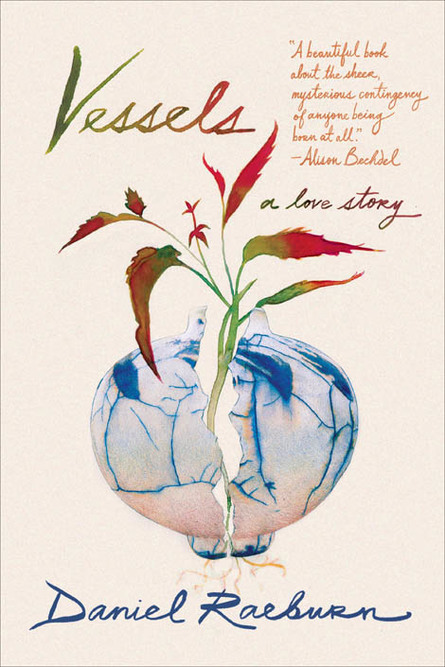
SC: Your book deals heavily with literal birth and death, telling the story of your and your wife’s struggle with multiple miscarriages as well as two healthy births. Beyond the literal, how does your book approach and discuss figurative birth and death? How did you weave together the literal and the figurative?
DR: This goes back to what I said about Irene’s birthday being ground zero. If my life’s a number line, she’s the zero on it; her death erased everything that had happened to us before. In that sense it was a kind of death for me too; but also a kind of rebirth in that I had to basically start my life over again. I didn’t really realize this until the day, many years later, when I was writing about her and abbreviated her name for the first time: Instead of “the day Irene died,” I wrote “the day I. died.” That’s when it clicked.
SC: Vessels also explores the progression of your relationship with your wife, from your first meeting throughout your building of a family. How did your perspective on your marriage and its dynamic change through the process of writing about it?
DR: When a child dies, it’s almost like something else has to die too. Usually it’s the marriage that produced the child. That was definitely the question in our marriage. Ultimately I realized that I had to end the book on an ambiguous note; to end by making the point that the same thing that broke our marriage had also cemented it.
SC: The Imp, a series of essays spotlighting various underground cartoonists, is your most previous work, published in the late 90s/ early 2000s. In terms of your writing, where were you mentally in the interim between The Imp and Vessels, published in March 2016? Why so long a break between your published works?
DR: Part of the reason is kids. I’ve been extremely busy for the past ten years raising two small children, who give you no rest whatsoever. Another reason is the process I described in the book. I was under contract to write a big book about comics, and after Irene died, my desire to write that book died too. But I didn’t realize it for several years. Once I did I paid back the advance to my publisher and wrote this book instead. Which took forever, in part because the book itself could’ve gone on forever. Every day was a new piece of material, a new development, a new wrinkle. I like to say that it took me a long time to make the book short.
SC: How did the experience of writing about other people, as in The Imp, differ from writing about yourself? Which do you prefer?
DR: No preference. They’re equally difficult, and the truth is that all my writing about cartoonists said as much about me as about the subjects themselves. The true subject of an essay is usually the essayist himself, and my essays about cartoonists were no exception. And the memoir’s not only about me; even though my consciousness is the main character, so to speak, so is my wife, and she’s the hero of the story. Memoirists worry more about their portrait of other people than their portrait of themselves.
SC: What’s important to keep in mind when writing a memoir?
DR: That it’s not about you. It’s about your reader, about her experience as a reader, not necessarily yours as a writer, or even as a character. You have to keep the reader in mind constantly. Most novelists and poets have this problem too. We all do; that’s one of the things that makes writing so difficult.
SC: What’s next for you?
DR: I’m not sure. Teaching full time and reading as many books as I can, that’s for sure. I’d like to go back to writing something that’s journalistic or essayistic, and I’m playing with a few ideas, including a true crime piece. But it’s way too early in the process to say.
**
Daniel Raeburn is the author of Chris Ware, a book of art criticism, and Vessels, a memoir. His essays have also appeared in The New Yorker, The Baffler, Tin House, and in The Imp, his series of booklets about underground cartoonists. He’s been awarded fellowships from the McDowell Colony, the Vermont Studio Center, the Howard Foundation, and the National Endowment for the Arts. He and his wife and daughters live in Chicago, where he teaches nonfiction writing at the University of Chicago.
November 10th, 2016 |
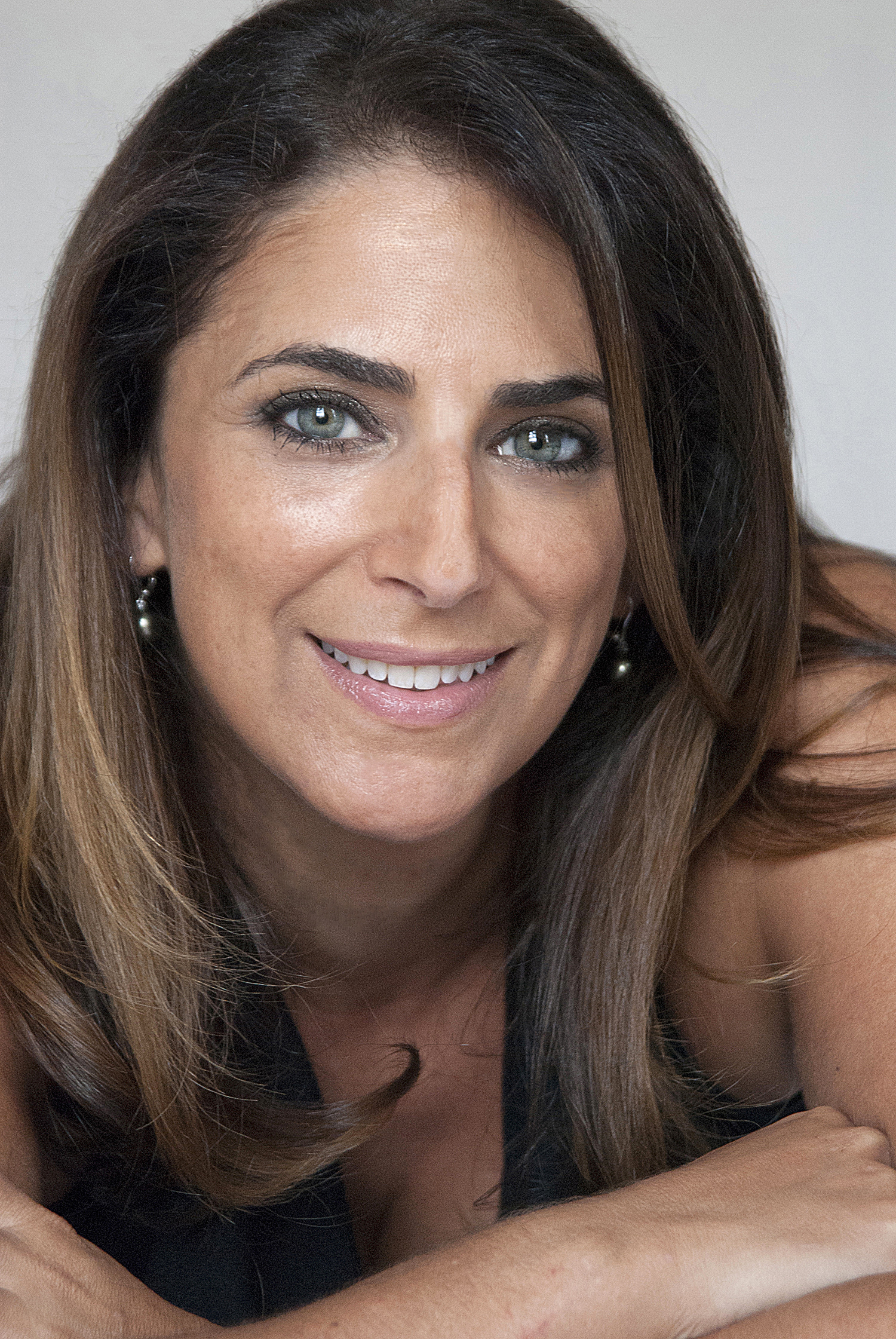 Midwestern Gothic staffer Lauren Stachew talks with author Allison Amend about her book Enchanted Islands, honoring a woman’s history, creating a framed narrative, and more.
Midwestern Gothic staffer Lauren Stachew talks with author Allison Amend about her book Enchanted Islands, honoring a woman’s history, creating a framed narrative, and more.
**
Lauren Stachew: What’s your connection to the Midwest?
Allison Amend: I’m a proud Chicagoan and lifelong Cubs fan. I grew up in Chicago, the product of two Michigan grads, and went to graduate school at the University of Iowa Writers’ Workshop. I may not live in Chicago, but I will forever consider it home.
LS: Apart from growing up in Chicago and attending the Iowa Writers’ Workshop, you also attended Stanford University and now live and teach in New York City. How has living on both the west and east coasts of the U.S. affected the way you think about and understand the Midwest?
AA: I’d lived for a year in Spain before I went to college on the west coast, so I assume there would be no culture shock. I was wrong. It took me a good year to understand the California subtext. Then I moved East and worked in Boston. There was a completely different level of “what I’m actually saying is the opposite of the words coming out of my mouth.” And then I moved to New York, where I thought everyone was yelling at me (they were). I still long for the plain-spoken Midwesterners of my youth. Ironically, living away from the Midwest for so long makes me an even more diehard Midwesterner. I flirt between letting everyone know that the flyover states are worth more than just a layover, and keeping it a secret so that all the Californians don’t move there. (I doubt this will happen; they can’t handle the weather.)
LS: Your most recent novel, Enchanted Islands, is inspired by the memoirs of Frances Conway, an American woman who lived on Floreana, an island in the Galapagos, with her husband, Ainslie, leading up to World War II. What challenges did you face in writing a fictional story about someone real? Did you ever feel limited in sticking to the facts of Frances’s life?
AA: The details of her life outside of her time on the islands are so sparse I felt there was a lot of room for invention. Once my fictional Frances gets to the Galapagos, though, I did feel conflicted. The real Frances and Ainslie lived on Santiago Island for 6 months before the government made them move to Floreana. I had originally followed that timeline and location, and invented an elaborate plot to get them from one island to another, but then I got to the Galapagos and couldn’t visit Santiago Island (only one spot on the island is visit-able, and only via cruise ship). It occurred to me: I’m writing a novel inspired by the voice and courage of a real woman; I can do whatever is best for the book. Then I felt freer to do what was best for the book.
As an aside, some people have expressed concern that it’s appropriation or exploitation to co-opt a historical figure for fiction (though of course it’s done often, especially for television and film). I thought about changing Frances’ name, but then it would just be a thinly veiled version of her and everyone would know who it was based on. I wanted to keep her name to honor her and her wonderful life, and hopefully bring her out of the historical shadows.
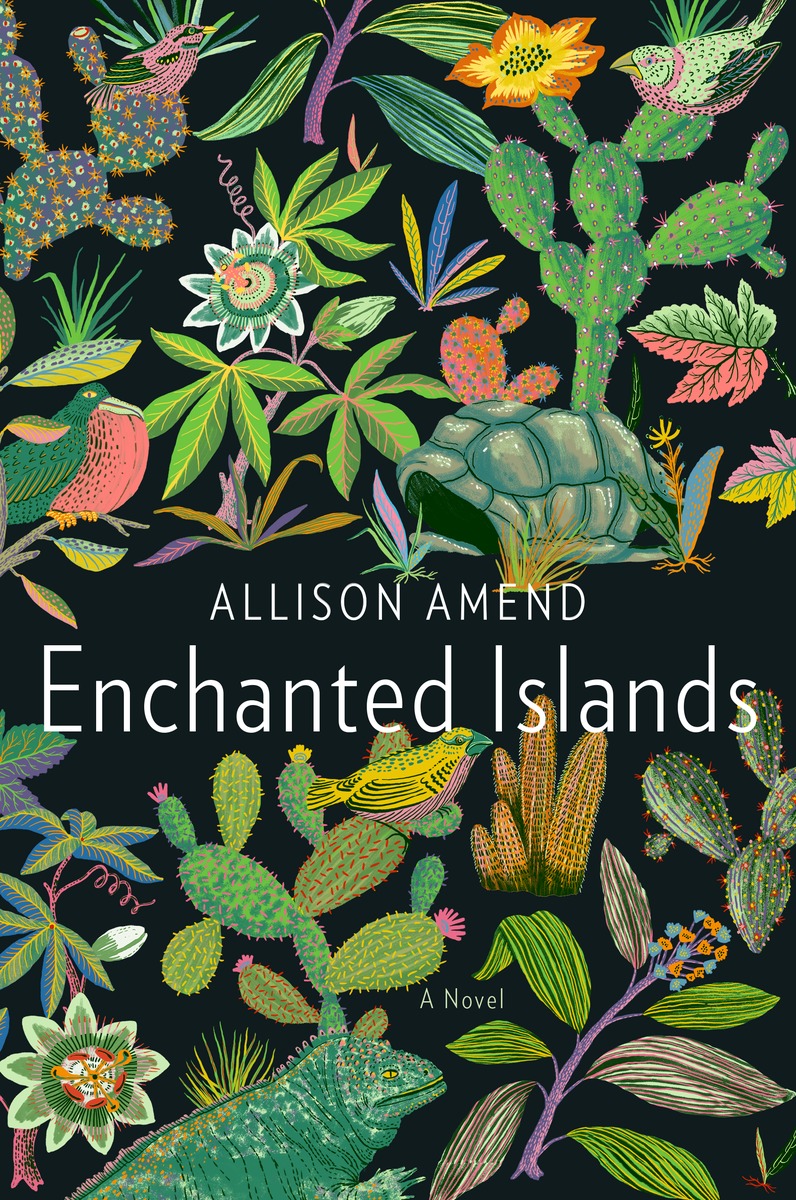
LS: Along with Frances’s memoirs, you’ve also traveled to the Galapagos islands – once as a teenager with your parents, and a second time to do research for this novel. At what point did you transition from research into the actual writing of the novel, or did you find yourself writing from the start?
AA: I once received a very good piece of advice from E.L. Doctorow about writing historical fiction. He said not to get bogged down in the research, just to make it up. You can look it up later. And I’ve subscribed to that — I began to write my version of Frances’ story as soon as I discovered her memoirs. And then I filled in the details as I went along. Of course, when I went to the Galapagos (about 3 months before I handed in the manuscript) the book got much better and richer. I was able to make Frances’ world come alive with smells and sounds. Most significantly, I experienced a small slice of the loneliness Frances must have suffered, and I think it made her a deeper character.
LS: The structure of your novel is a frame – the narrative both begins and ends at the final years of Frances’ life, and the pages in between tell the story of her early life and adventures in the Galapagos. Was it always your intention to structure the novel this way, or did it begin as something else?
AA: I did begin writing from the end of Frances’ life, but really only as a way to enter the story (I write knowing full well that at least 30% of what I generate won’t end up in a final version, and that’s a conservative estimate). But then it seemed to work for the book, so I kept it. I’d been studying framed narratives while teaching a class on the novella, a form which uses them frequently, so I think they’re an interesting narrative device. Creating suspense as an author even though the ending has already been revealed is a good challenge.
LS: Which author or authors have had the most influence on your writing?
AA: I cite Jennifer Egan so much she must think I’m obsessed with her. But I love her innovation, her ability to hint at something so much larger than what’s on the page. One of my favorite books is Madame Bovary, for its deep character analysis. Gabriel García Márquez made me want to be a writer (though I write nothing like him). I will also read whatever Margaret Atwood writes. Elena Ferrante’s books, which I read at the end of writing Enchanted Islands, validated my suspicion that female friendship across decades was a topic worth writing about.
My contemporaries, some of them my classmates from Iowa, have had tremendous influence on the writer I have become: ZZ Packer, Adam Haslett, Thisbe Nissen, Irina Reyn, Amy Brill, Laura van den Berg, Michelle Hoover, etc.
LS: As a professor of creative writing at Lehman College, is there a piece of advice you always give your students?
AA: Get a degree in bookkeeping. It’s hard to earn a living as a writer. Also, I subscribe to Anne Lamott’s sh***y first drafts club. Just get it down on “paper.” You can edit it later. Also, the thing that separates writers from people who want to write is the writing. Don’t forget to do it.
LS: What’s next for you?
AA: I get to be the expert on a Galapagos Cruise (New York Times Journeys) next summer. I’ve started a new book based loosely on a hate crime that occurred in Chicago in 2005. So I’m hoping to be spending more time in the Midwest in the near future!
**
Allison Amend, a graduate of the Iowa Writer’s Workshop, is the author of the novels A Nearly Perfect Copy and Stations West, which was a finalist for the 2011 Sami Rohr Prize for Jewish Literature and the Oklahoma Book Award. She is also the author of the Independent Publisher’s Award-winning short story collection Things That Pass for Love. She lives in New York City where she teaches creative writing.
November 3rd, 2016 |
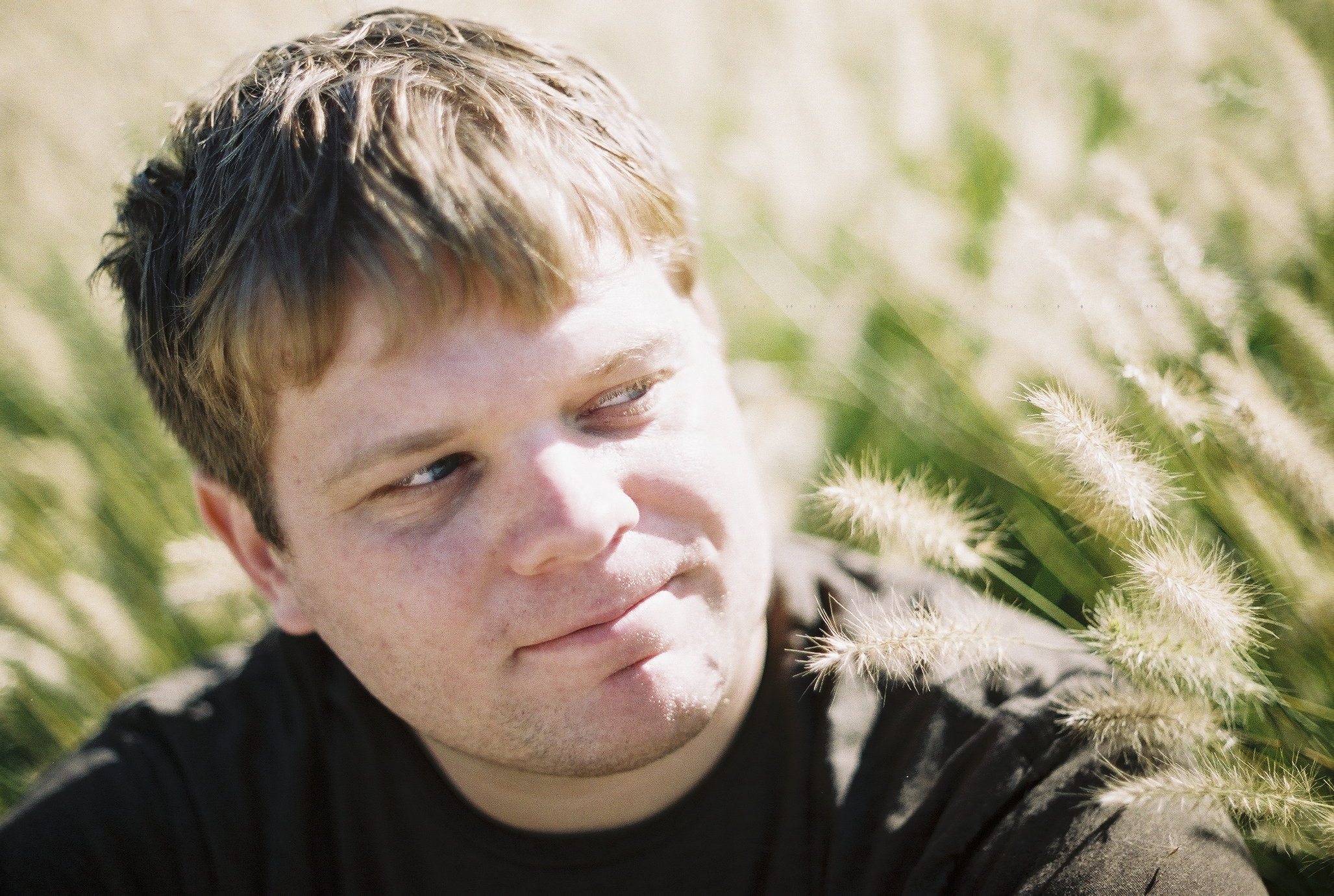 Midwestern Gothic staffer Allison Reck talked with author Theodore Wheeler about his collection Bad Faith, writing from different points of view, the vulnerability featured in his stories, and more.
Midwestern Gothic staffer Allison Reck talked with author Theodore Wheeler about his collection Bad Faith, writing from different points of view, the vulnerability featured in his stories, and more.
**
Allison Reck: What’s your connection to the Midwest?
Theodore Wheeler: I was born in Council Bluffs, Iowa, and have lived in the Midwest my entire life. I also enjoy eating dinner early on the weekends and experiencing all four meteorological seasons. So, solidly Midwestern.
AR: You were a fellow at the Akademie Schloss Solitude in Germany in 2014, but you live in Omaha, Nebraska. Do you think that living in such different environments influenced your writing in some way?
TW: The two places seem pretty similar to me, besides some terrain and weather differences. I imagine that this is mostly due to the fact that the whole time I was in Stuttgart I was working on a novel that’s set in Omaha (mostly), Chicago, and Wisconsin. So even while I was there, Omaha never really left me.
Probably the biggest difference was the language barrier, as I don’t speak German. Even though a lot of Germans do speak English and it’s pretty easy to get by without much German, the experience of living at least partially outside my language was great, and is something I really miss. I think the pace of my sentences are different as a result — that I simplified things a lot, with shorter and halting sentences that build into something more complex and exciting, because of the way I was communicating there.
AR: Your new collection of stories, Bad Faith, includes a diverse group of subjects – from a boy with a disabled father to a biracial man at his white mother’s funeral. How did you manage to write from such different points of view in your stories? Did you notice your writing style changed with each different perspective?
TW: There is some change in style, of course, depending on how close the POV is to the main character and what I’m trying to do with the story. I write around a story a lot during early drafts — doing side histories, biographies, exploring setting — mostly with the idea of finding the voice of the story. Sometimes that voice is very close to a character’s, sometimes not. Part of the appeal of writing fiction is speculating what it’s like to be someone who’s very different. I’m not biracial, I don’t have a disabled father, both my parents are alive. If the story is successful, a great amount of empathy and imagination is necessary, and I hope my writing rises to that occasion. Finding common ground, discovering things about different people–that’s exciting stuff!
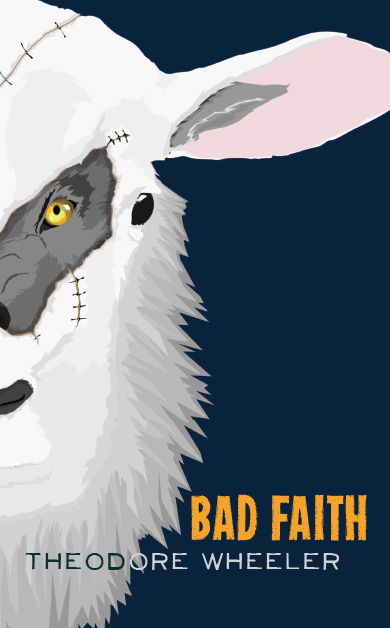
AR: In addition to writing, you work as a legal reporter for the civil courts of Nebraska – a dramatic departure from fiction writing. How do you cope with the change between writing styles and subject matter? Are there any specific tricks you use in your craft process to redirect your writing to an opposing genre?
TW: I’m not sure that there’s any trick to it. Switching between fiction and reporting hasn’t really been a problem for me. If you look at writing as performance, it’s about engaging the character, the voice that’s required for the task at hand. That sounds utilitarian, and I guess it is. Probably one thing is that I don’t really think about it that much. Also, I almost always take a 15-20 minute nap or go for a walk after writing fiction and before starting my day job. That probably helps switching gears more than anything.
AR: Bad Faith is described as a collection in which “the herd can’t always outpace the predator.” What exactly does this mean to you, in relation to the theme of fleeing or rejecting a contemporary domestic life?
TW: That life is overwhelming a lot of times, particularly in small moments of crisis that short fiction examines. Most of the characters in the book really do try to do right by the people in their lives, but that also makes them vulnerable. Like a straggler too far away from the herd is vulnerable, more or less.
AR: In addition to your newest collection, Bad Faith, you have previously published a chapbook and multiple stories in other literary journals. Now, you also have a novel, Kings of Broken Things, forthcoming in 2017. What do you feel are the advantages (or disadvantages) of having made your debut in short form fiction rather than publishing a novel at the start?
TW: It isn’t this way for everyone, obviously, but I feel like this is the more traditional path for writers, proving their mettle through progressively bigger publications, learning more about the art and business sides and being able to pull off bigger projects. Having the chapbook come out last year allowed me to learn the basics of how to promote a book — things like how to contact booksellers, how to put together a launch party, what kinds of things resonate in a PR pitch — while not really having to worry about sales so much. Nobody’s livelihood was depending on my chapbook sales. That being said, we went through two printings of On the River, Down Where They Found Willy Brown, which felt like a nice victory.
As to having the collection or novel come out first, I feel like it’s pretty similar along these lines. Certainly publishing a book is a big investment for any publisher and I’m grateful for all the time, effort, sweat, and tears Queen’s Ferry Press has put into getting Bad Faith out there. There was a publicist who booked readings, experienced book pros who put it together. But, still, a small operation. Having my novel published with a New York house seems like a different kind of experience, and one I’m enjoying so far.
AR: In the advanced praise for Bad Faith, fellow authors hailed you for your “nuanced understanding of human nature” and said that your stories revealed the “malice, confusion, and ultimate frailty of us all.” Do you agree with this commentary, that your collection exposes humanity as confused, malicious and frail? What did you hope to convey about humanity in writing these stories?
TW: I didn’t really intend to write a mean-spirited book, and I don’t think it is. There’s something really compelling to me about vulnerability, particular those who are willfully exposed and those who try to cover up weakness by being cruel to others. There are a few malicious characters in Bad Faith — notably Aaron Kleinhardt, a criminal element who appears in two stories and seven between-story vignettes — but for the most part these are people who are vulnerable and different, but not really that interested in covering up their frailty.
AR: What’s next for you?
TW: I’m really excited for the release of my debut novel next summer, Kings of Broken Things. It’s set during World War I in Omaha and follows two young immigrants who become mixed up with different elements involved in the Omaha Race Riot of 1919 and the lynching of Will Brown. Hopefully it’s a novel that’s timely and timeless, as the cliché goes. I can’t wait to share it with readers.
Right now I’m working on another novel, tentatively titled From the Files of the Chief Inspector, that features stories of love lost and abandoned set in the context of a post-9/11 domestic spying campaign. It’s coming along.
**
Theodore Wheeler is the author of Bad Faith, a recently-published collection of short fiction, and Kings of Broken Things, a novel that’s forthcoming in 2017. He’s been published in Best New American Voices, New Stories from the Midwest, The Southern Review, The Kenyon Review, and Boulevard, among others, and his story “The Mercy Killing of Harry Kleinhardt” appeared in Midwestern Gothic Issue 8. He lives in Omaha with his wife and two daughters.
October 27th, 2016 |
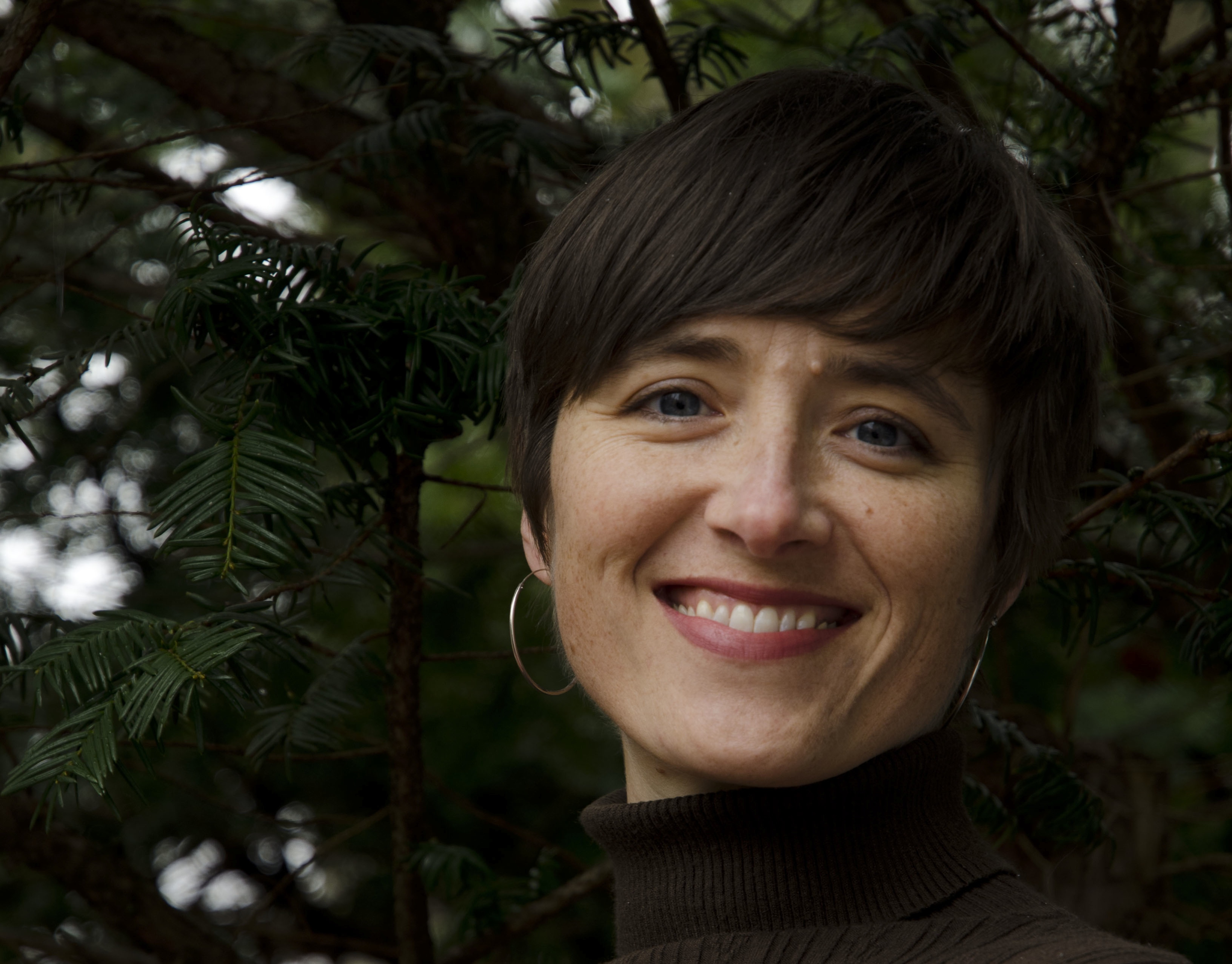 Midwestern Gothic staffer Megan Valley talked with author Amy Hassinger about her book After the Dam, learning through teaching, commonalities between environment and motherhood & more.
Midwestern Gothic staffer Megan Valley talked with author Amy Hassinger about her book After the Dam, learning through teaching, commonalities between environment and motherhood & more.
**
Megan Valley: What’s your connection to the Midwest?
Amy Hassinger: I’ve lived in the Midwest since 1999, when I moved to Ames, Iowa from the east coast. Since then, I’ve lived in Ames and Iowa City, Iowa, Okemos, Michigan, and Urbana, Illinois, where I live now. But my roots go deeper: my mother was raised outside of Chicago, and my family has vacationed on a lake in northern Wisconsin going back four generations.
MV: After the Dam is your third novel — how has your approach to writing changed since Nina: Adolescence was published in 2003?
AH: For one thing, my time has grown more fragmented as I’ve taken on more responsibilities (becoming a mother, taking on teaching jobs, editing others’ work, promoting my own). I like to think I’m more efficient with the time I do have, though that’s not always true. My process remains similar. I like to plunge into research on almost any piece I’m working on. I want to get out of my own narrow range of experience and expand the boundaries of self and voice. So I do a lot of reading, lurking in libraries, and web-trawling for an inordinate length of time. Also, talking to people who know something about the world I’m learning about. If it’s a place that’s new to me, I visit it, do my sensory research — taking in the light, the lay of the land, the smells, impressions. And then I’ll dive into the vicissitudes of the drafting process. The research is essential for me — it introduces me to the raw material of my story.
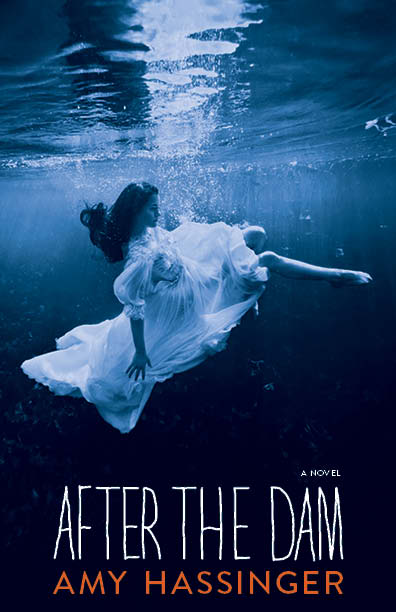
MV: How have your experience as a Faculty Mentor in the University of Nebraska at Omaha’s MFA in Writing Program, teaching at the Osher Lifelong Learning Institute, and a writing workshop leader influenced your own writing?
AH: Teaching has helped me articulate and put names to the things I was doing on a more unconscious level in my own work. I understand the mechanisms of story structure more thoroughly now for having taught them. Workshops require close reading of others’ work, which is always instructive. Having to prepare lectures regularly provides me with a structure within which to explore questions that might be bedeviling me in my own work. So, for example, if I’m having trouble figuring out how to whittle down and otherwise grapple with the enormous amount of exposition I need to fit in my own novel (as a result of all that research!), I’ll take a look at how other writers have handled it, and compile my observations into a lecture. To teach well, you must always be learning. The same is true of writing.
MV: After the Dam was a finalist for the Siskiyou Prize in New Environmental Literature. How do environmental themes fit together with the other major theme of motherhood?
AH: As the title implies, there is a dam at the center of the novel. This dam is both a literal story element — a physical structure that holds back water — and a symbol, a literary structural element. In the book, the construction of the dam transformed its surroundings, causing both ecological damage and social trauma to the local Ojibwe tribe, whose land, ricing grounds, and ancient graves were flooded to create the reservoir. The novel explores both the legacy of this dam as well as its future, and the future of the river it controls.
Motherhood, too, is a kind of radical, even violent transformation. In the novel, Rachel, the protagonist, resists her new identity and its domestic expectations, even as she fiercely loves her baby. She has to be willing to let go of — even destroy — her former pre-mother self in order to embrace the unfolding reality of who she is becoming.
MV: The main characters of your three novels include: a young woman enamored with a priest near the turn of the century in France, a fifteen-year-old girl who becomes a model for her artist mother after the death of her brother, and a young mother who runs away from her husband. How do you create such varied characters and voices?
AH: I guess it goes back to research. As I mentioned earlier, I really am interested in pushing at the boundaries of my own experience. Maybe it’s because I find my own life relatively conventional, maybe it’s because I’m a curious person, maybe it’s because I’m restless and always looking for the next challenge, but a large part of the reason I write (and read) is because I want to explore. Hence the varied subject matter. Of course, the challenge then becomes learning enough about your material to write about it convincingly and well, in other words, getting the details right. That’s the tricky part.
MV: What do you read when you’re not working on your own writing or as a manuscript consultant? How have these affected your writing?
AH: I’m a relatively haphazard reader, a thing I’m always vaguely wanting to change about myself, but never quite getting around to doing. Often I’m reading something that has to do with my work. I produce a weekly micro-podcast called The Literary Life that features the work of Midwestern authors, so I’m always looking for writers to feature. Writers I adore and return to include Virginia Woolf, Louise Erdrich, Andre Dubus, PattiAnn Rogers, Toni Morrison, Aleksander Hemon, Marilynne Robinson, and Gustave Flaubert. Writers I adore and want to read more of include Alice Munro, Kevin Brockmeier, E.L. Doctorow, Rebecca Solnit, Jeffrey Eugenides, Eowyn Ivey, Haruki Murakami, Colm Toibin, Mary Oliver. The list goes on and on!
Each of the writers I’ve read and loved has influenced my work in some way, I’m sure. Virginia Woolf’s Orlando took my breath away and made me want to be a writer when I first read it in college. I still strive (and fail) to plumb the psyches of my characters as deeply as she does. I read Andre Dubus for his depth of compassion, another thing I strive for in my own work. I love Louise Erdrich’s expansive stories and flexibility with point of view. PattiAnn Rogers’ poems are joyous songs of praise and awe at the intricately evolved organisms all around us. Toni Morrison’s Song of Solomon gave me one of my first lessons in novel structure, and her willingness to entertain the magical opened up the possibility of what could be done in a novel. Reading Aleksander Hemon’s sentences is like excavating gems — each one a discovery. Marilynne Robinson’s novels are gorgeous prolonged meditations on spirit and existence; Flaubert’s Madame Bovary is a model of evocative descriptive writing. Each of these people, along with many many others, has taught me something essential about how to write a sentence, a paragraph, a story, a book.
I just finished re-reading Richard Hoffman’s memoir, Love & Fury. All the way through, I found myself admiring his craft — the way he weaves together several different storylines as well as his own essayistic reflections on fatherhood, boyhood, and grandfatherhood, as well as race and class in America. After I set it aside, I immediately was hit with three new ideas of pieces or books I wanted to write. Somehow, reading his book and admiring his craft opened that door for me. Reading is an absolutely essential part of the process, beginning, middle, and end.
MV: What do you wish you had known when you first began writing?
AH: Well, I’m certainly glad I didn’t know how difficult it would be to complete a project, let alone make a living as a writer. Entering it naively was probably the only way for me to do it. I didn’t know better. If I had, I never would have done it.
I don’t think there’s anything I could have known back then that would have smoothed the way. It’s not a smooth way.
MV: What’s next for you?
AH: I’m sitting on a draft of a new novel right now, letting it cool. I’ve got an essay I’m working on about a back infection that almost killed me two years ago, and a couple other short pieces waiting in the wings. After that, I plan to tackle one of several longer-term projects I have in mind. We’ll see what pulls me.
**
Amy Hassinger is the author of three novels: Nina: Adolescence, The Priest’s Madonna, and After the Dam, a finalist for the Siskiyou Prize for New Environmental Literature. Her writing has been translated into five languages and has won awards from Creative Nonfiction, Publisher’s Weekly, and the Illinois Arts Council. She’s placed her work in numerous venues, including The New York Times, Creative Nonfiction, The Writers’ Chronicle, and The Los Angeles Review of Books. She is a graduate of the Iowa Writers’ Workshop and teaches in the University of Nebraska at Omaha’s MFA in Writing Program. She also produces a micro-podcast called The Literary Life that features the work of Midwestern writers. You can find out more about her at www.amyhassinger.com.
October 21st, 2016 |
 Midwestern Gothic staffer Sydney Cohen talked with author Michelle Herman about her novel Like A Song, using writing as a vehicle for the spoken word, exploring a relationship in fiction and more.
Midwestern Gothic staffer Sydney Cohen talked with author Michelle Herman about her novel Like A Song, using writing as a vehicle for the spoken word, exploring a relationship in fiction and more.
 Midwestern Gothic staffer Megan Valley talked with poet Steve Castro about Latin@ Rising, trends in poetry, circular poems and more.
Midwestern Gothic staffer Megan Valley talked with poet Steve Castro about Latin@ Rising, trends in poetry, circular poems and more. Midwestern Gothic staffer Lauren Stachew talked with author David Trinidad about his collection, Notes on a Past Life, unsettling emotions in poetry, letting poems be and more.
Midwestern Gothic staffer Lauren Stachew talked with author David Trinidad about his collection, Notes on a Past Life, unsettling emotions in poetry, letting poems be and more.
 Midwestern Gothic staffer Megan Valley talked with author Gary Amdahl about The Daredevils, musing vs. building, radical labor activism and more.
Midwestern Gothic staffer Megan Valley talked with author Gary Amdahl about The Daredevils, musing vs. building, radical labor activism and more.
 Midwestern Gothic staffer Lauren Stachew talks with author Tiffany McDaniel about her novel The Summer that Melted Everything, what’s in a name, midwestern gothic as a genre, and more.
Midwestern Gothic staffer Lauren Stachew talks with author Tiffany McDaniel about her novel The Summer that Melted Everything, what’s in a name, midwestern gothic as a genre, and more.
 Midwestern Gothic staffer Kristina Perkins talked with author Alexander Weinstein about his collection Children of the New World, the relationship between technological and interpersonal connection, finding hope in dystopia and more.
Midwestern Gothic staffer Kristina Perkins talked with author Alexander Weinstein about his collection Children of the New World, the relationship between technological and interpersonal connection, finding hope in dystopia and more.
 Midwestern Gothic staffer Sydney Cohen talked with author Daniel Raeburn about his book Vessels, looking for a home, birth and death and more.
Midwestern Gothic staffer Sydney Cohen talked with author Daniel Raeburn about his book Vessels, looking for a home, birth and death and more.
 Midwestern Gothic staffer Lauren Stachew talks with author Allison Amend about her book Enchanted Islands, honoring a woman’s history, creating a framed narrative, and more.
Midwestern Gothic staffer Lauren Stachew talks with author Allison Amend about her book Enchanted Islands, honoring a woman’s history, creating a framed narrative, and more.
 Midwestern Gothic staffer Allison Reck talked with author Theodore Wheeler about his collection Bad Faith, writing from different points of view, the vulnerability featured in his stories, and more.
Midwestern Gothic staffer Allison Reck talked with author Theodore Wheeler about his collection Bad Faith, writing from different points of view, the vulnerability featured in his stories, and more.
 Midwestern Gothic staffer Megan Valley talked with author Amy Hassinger about her book After the Dam, learning through teaching, commonalities between environment and motherhood & more.
Midwestern Gothic staffer Megan Valley talked with author Amy Hassinger about her book After the Dam, learning through teaching, commonalities between environment and motherhood & more.




